|
Achaemenian
glazed tile
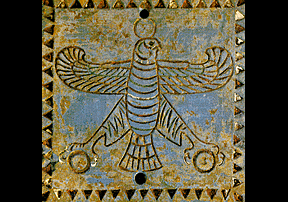
|
Zoroaster's
Ka-ba at Naqsh-e Rostam, Marvdasht
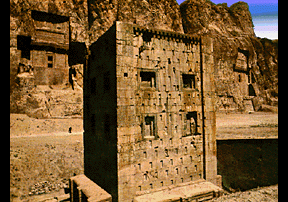

|
|
Head
of Tepti Ahar's statue
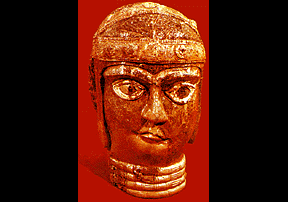
|
Taq-e
Bostan, Coronation of Ardeshir II Sassani
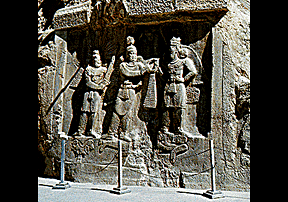

|
Stele
of Artaxerxes
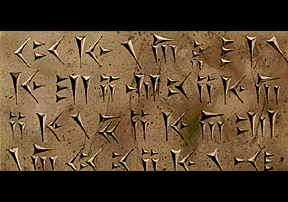
|
Taq-e
Bostan, Khosrow Parviz on horseback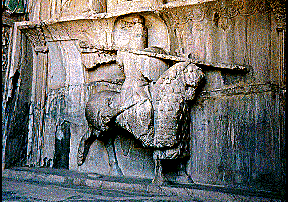

|
|
Head
of Achaemenian soldier, Persopolis
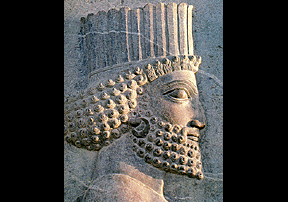
|
Rows
of "Immortals" on northern side of stairway,
Persepolis
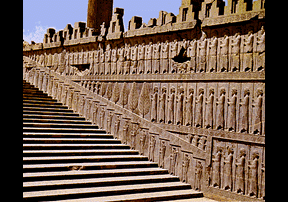

|
Panorama
of Persepolis from the top of Mt. Rahmat
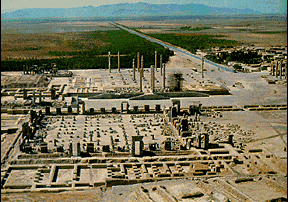
|
Tachar
Palace or Mirror Hall, built under Darius the Great
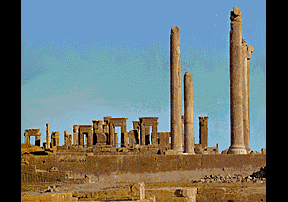

|
Persepolis
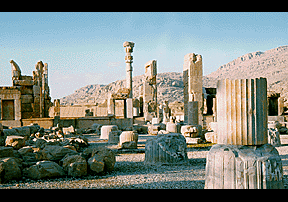
|
Persepolis,
Portico
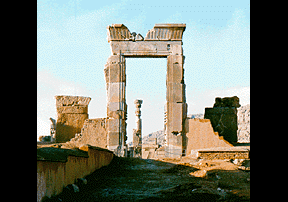

|
Palace
of Cyrus, covering 2,620 sq. meters
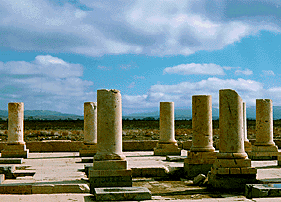
|
Pasargad,
Tomb of Cyrus
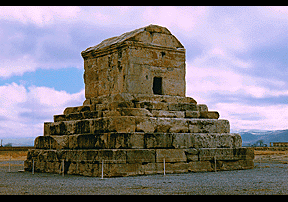

|
Bull-shaped
capital. Persepolis. Achaemenian period

|
Bull
& Lion, eastern stairway of the Apadana at Persopolis
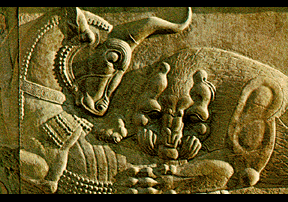

|
Gold-beaten
silver pitcher, 7th century AD
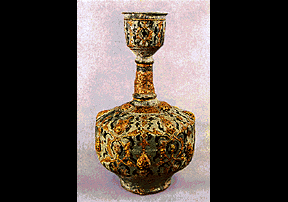
|
Head
of an Achaemenian price, 5th Century BC
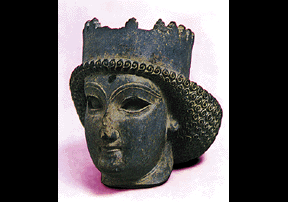

|
Elamite
temple in the city of Dur-Untash. Mid- 12th century BC
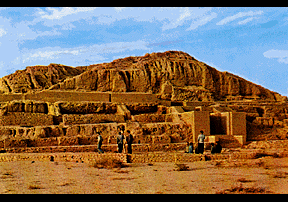
|
Citadel
of Shoosh
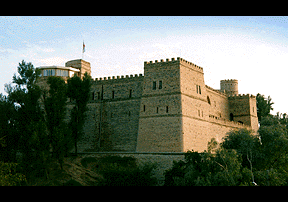

|
Golden
four-horsed war chariot. 6th to 4th Century BC
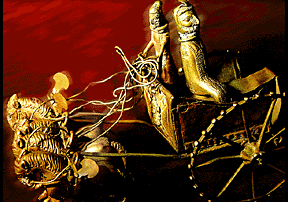
|
Incised
glass vase, Arsacid period. Azarbaijan region
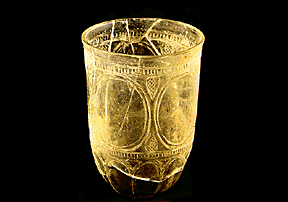

|
Twin-shelled
ceramic ewer, 6th century AD. Gonabad region
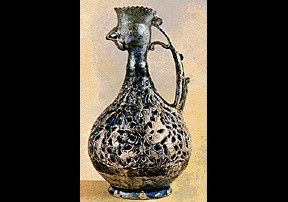
|
Golden
lion head, garment decoration
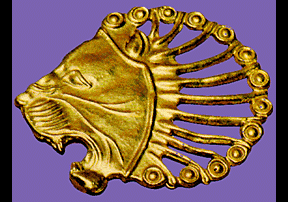

|
Golden
ring of power
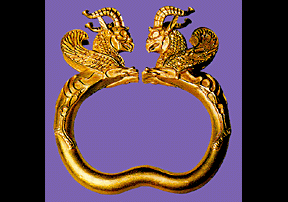
|
Golden
rhyton, 5th century BC, Hamadan
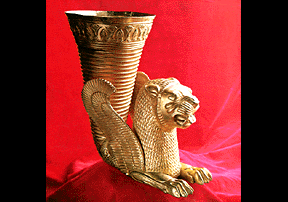

|
Helmet
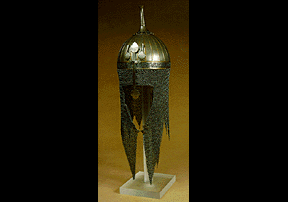
|
Arg-e
(citadel of) Bam, close to Kerman


|
|
Interesting Places |
Azadi
(Shahyad) Square
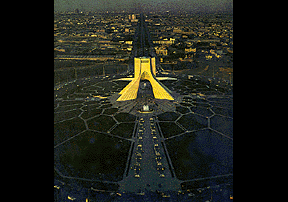
|
Ali-Qapu
Palace


|
Vakil
Bath-house, Kerman

|
Cheshmeh
Ali Monument in Damghan, Qajar period
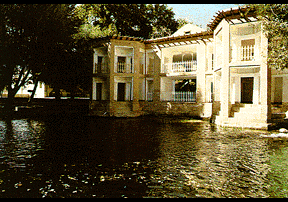

|
Narenjestan
(orange orchard) of Qavam, Shiraz

|
Chehel-Sotun
Building in Qazvin, Qajar period
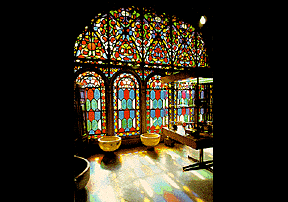

|
Chehel-Sotun
Building in Qazvin, Qajar period
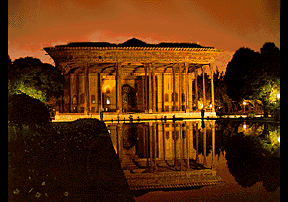
|
Taq-e
Bostan, Kermanshah, Sassan period
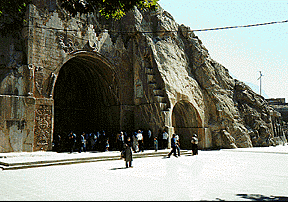

|
Holy
Shrine of Imam Reza, Mashhad
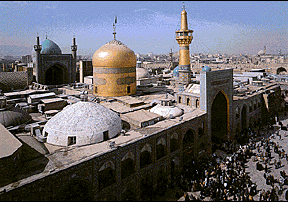
|
Khaju
bridge, Esfahan
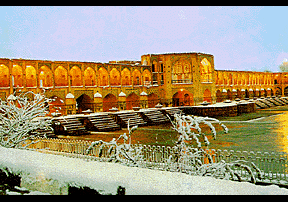

|
Emam
(Shah) Mosque of Esfahan
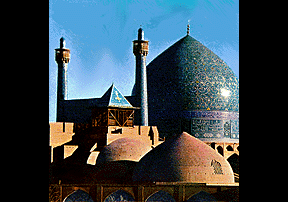
|
Abarquh,
old house with two-tiered wind-towers. 13th century AD
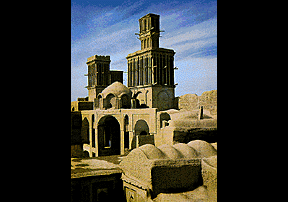

|
Jame
(Congregational) Mosque of Esfahan
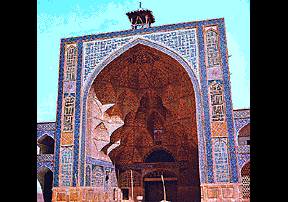
|
Madrasa
(theological school) of Khargerd, Timurid period
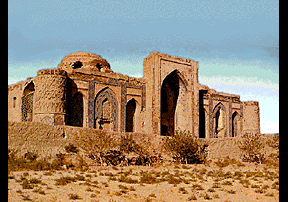

|
Emam
(Shah) Mosque of Esfahan, tessellated tile-work

|
Emam
(Shah) Mosque of Esfahan, Safavid period
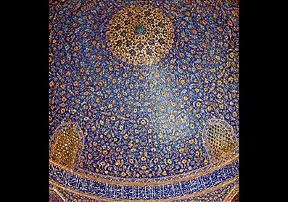

|
Ali
Mosque, Esfahan. Brick and tile-wrok
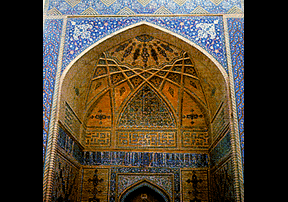
|
Chahar-Bagh
(Shah's Mother) Madrasa in Esfahahn
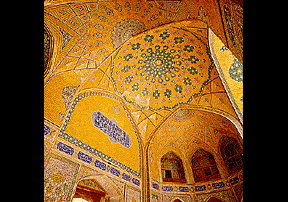

|
Tachar
Palace, Persepolis

|
Mausoleum
of the Ilkhanid ruler Oljaitu at Soltaniyeh, Zanjan
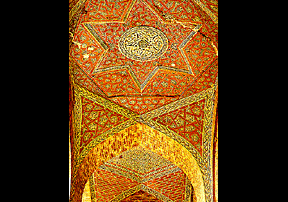

|
Iran-e
Bastan Museum
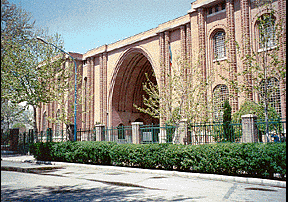
|
Avan
Lake, between Roodbar and Alamut
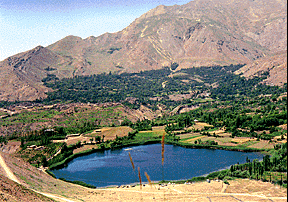

|
Massule
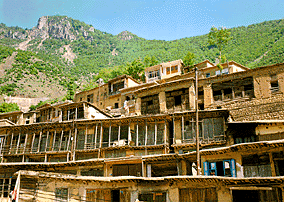
|
Coronation
Gallery


|
Bagh-e
Eram, Shiraz. Built by Nasser-ed-Din Shah
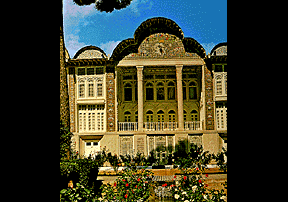
|
Shah's
Crown, 3380 diamonds, 638 pearls, 5 emeralds & 2 sapphires
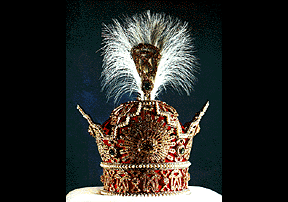

|
Empress'
Crown, 105-ct emrld, 1469 dmnds, 36 emrlds, 36 rubies & 105 pearls

|
The
Darya-ye Noor, 182-carat diamond
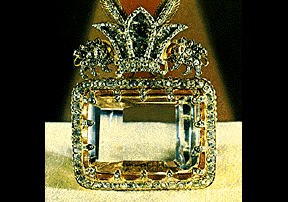

|
Tus
Museum, Tomb of Ferdowsi
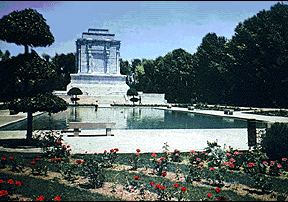
|
Ramsar
Palace, Presently Ramsar Hotel
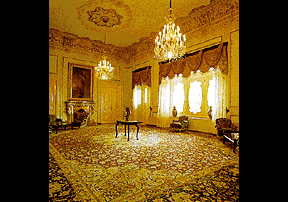

|
|
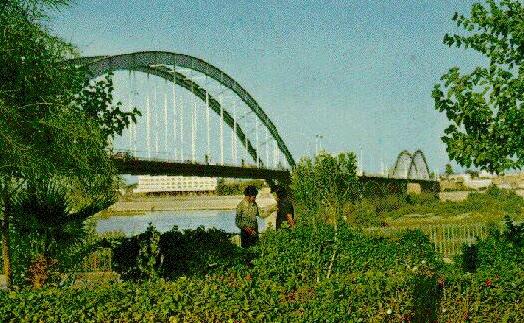
Ahwaz showing Bridge over the
Karoon
|
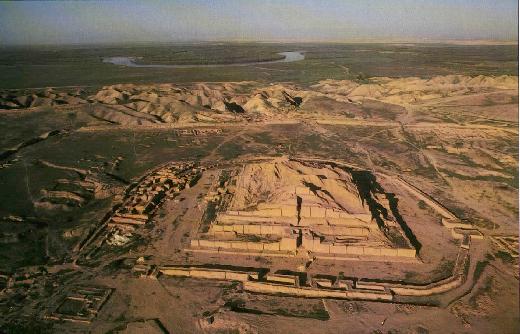
Site of King Untash Napirisha's
Ziggurat, Chogha Zanbil,
25 miles south-east of Susa, c 1250 BC
|
| |
|
|
Famous Persian |
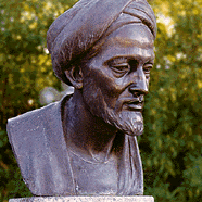 |
Avicenna.
Hojjat-ol-Haqq Sheikh-or- Raeis Sharafol-Molk Abu-Ali Hossein ebn-e
Abdollah ebn-e Sina, was a physician & savant of the 4th century
AD. Avicenna's two most important works are The Book of Healing and
The Canon of Medicine. The first is a scientific encyclopedia covering
logic, natural sciences, psychology, geometry, astronomy, arithmetic and
music. The second is the most famous single book in the history of
medicine.

|
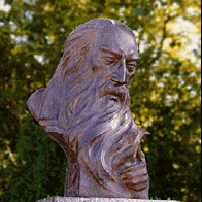 |
Attar
Neishaburi. Farid-ed-Din
Abu-Hamed ebn-e Abu-Bakr Ebrahim-al-Haqq Attar Kadkani Neishaburi is a
poet of the 6th-7th century AD.

|
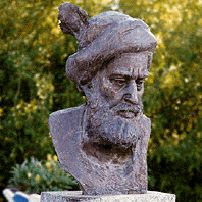 |
Ferdowsi.
Abolqassem Mansur ebn-e Hassan Ferdowsi Tussi is the greatest Iranian epic
poet. The author of the Persian national epic, Shah-nameh
("Book of Kings"). Ferdowsi was occupied by this task for
35 years. Written for Sultan Mahmud of Ghazna, the Shahnameh
is a poem of nearly 60,000 verses, mainly based on the Khvatay- namak,
a history of the kings of Persia in Pahlavi (Middle Persian) from mythical
times down to the 7th century.

|
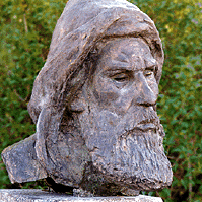 |
Rudaki.
Abu Abdollah Jafar ebn-e Mohammad is the first poet of note to compose
poems in the "New Persian," written in Arabic alphabet, widely
regarded as the father of Persian poetry. Approximately 100,000
couplets are attributed to him, but of that enormous output, fewer than
1,000 have survived. His poems are written in a simple style,
characterized by optimism and charm and, toward the end of his life, by a
touching melancholy.

|
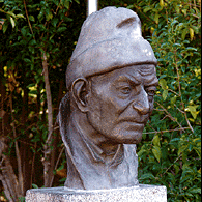 |
Shahryar.
Shahriar is a great contemporary Iranian poet.

|
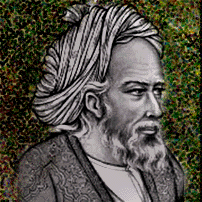 |
Khayyam.
Abu al-Fath Omar ben Ibrahim al-Khayyam was a poet as well as a
mathematician and astronomer of the 11th century. He discovered a
geometrical method to solve cubic equations by intersecting a parabola
with a circle. Despite his great scientific work, Khayyam is best
known as a result of Edward Fitzgerald's popular translation in 1859 of
nearly 600 short four line poems the Rubaiyat .

|
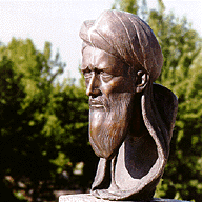 |
Zakaria-ye-Razi.
Mohammad ebn-e Zakaria-ye Razi of the 3rd century AD is a celebrated
alchemist and Muslim philosopher who is also considered to have been the
greatest physician of the Islamic world. His experiments led to the
discovery of sulfuric acid and alcohol. His two most significant medical
works are the Kitab al-Mansuri and Kitab al-hawi.

|
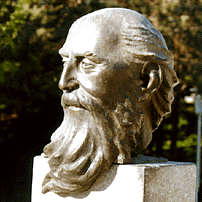 |
Vahshi
Bafqi. Mowlana Shams-ed-Din (Kamal-ol-Molk)
Mohammad Vahshi Bafqi is a poet of the 10th century AD.

|
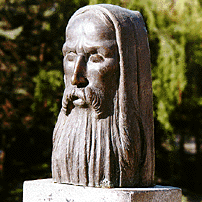 |
Khajeh
Abdollah Ansari. Khajeh Abdollah
Ansari Heravi lived in the 4th and 5th centuries AD.

|
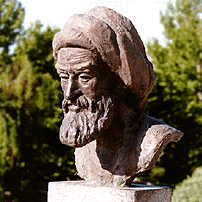 |
Nasser-Khosrow
Qobadiani. Hakim Abu-Moeen Nasser-Khosrow
ebn-e Haress al-Qobadiani al-Balkhi al-Marvazi is a poet and writer of the
5th century AD.

|
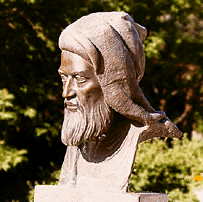 |
Mohtashem
Kashani. Shams-osh-Shoara
Kamal-ed-Din Mohtashem Kashani is a poet of the 10th century AH. He is
famous for his religious poems.

|
 |
Sa’di.
Abu Mohammad Moshref-ed-Din Mosleh ebn-e Abdollah ebn-e Moshref as-Sadi
Shirazi is a great poet of the 7th century AD. His best known works
are the Bustan (1257; The Orchard, 1882) and the Gulistan
(1258; The Rose Garden, 1964). The Bustan is entirely in
verse (epic metre) and consists of stories aptly illustrating the standard
virtues recommended to Muslims. The Gulistan is mainly in prose and
contains stories and personal anecdotes.

|
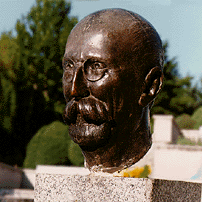 |
Kamal-ol-Molk.
The great Iranian painter Mohammad Ghaffari, entitled Kamalol-Molk, lived
in the 13th and early 14th century AD.

|
| |
Hafiz
(1325?-1389?), Persian poet, born in Shìraz (now in Iran) into a poor
family. Originally named Mohammed Shams od-Din, he gained the respectful
title Hafiz, meaning “one who has memorized the Koran,” as a teacher
of the Koran. He was a member of the order of Sufi mystics and also, at
times, a court poet. On a deep level, according to some scholars, his
poems reflect his consuming devotion as a Sufi to union with the divine.
They also satirize hypocritical Muslim religious leaders. Hafiz's
work, collected under the title of Divan (trans. 1891), contains more than
500 poems, most of them in the form of a ghazal, a short traditional
Persian form that he perfected. The extraordinary popularity of Hafez's
poetry in all Persian-speaking lands stems from his simple and often
colloquial though musical language, free from artificial virtuosity, and
his unaffected use of homely images and proverbial expressions.

|
| |
|
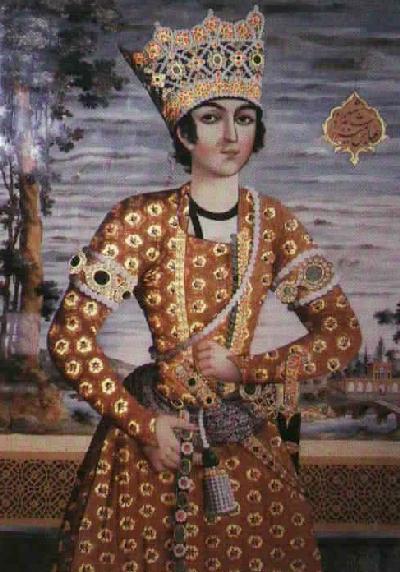
Prince
Abbas Mirza, eglomise.
Ethnographical Museum
Tehran
|
|

Nagsh-e Rostam (Nagsh-i Rostam)
close to Persepolis is actually the site where the Achaemenid kings
put up the reliefs and their tombs. The Sassanian kings however added
some reliefs of their own here. This relief shows the Investiture of
Ardeshir I (on left ) 224-41 AD, the first Sassanian King of Persia.
|
|

Close
up of a Bas Relief of Cyrus by Lewis Batros
at Bicenntenial Park, Sydney, Australia.
The
Original is at Pasargade, the city Cyrus built as his capital in Fars,
Iran.
If
you wait a bit the image will alternate between the original relief at
Pasargade and the replica in
|
|
.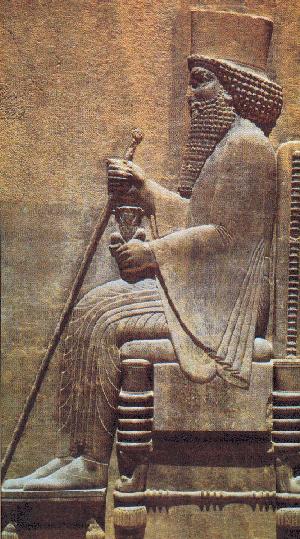
Darius
the Great
(521-486 BC)
Enthroned
in Peresepolis, the magnificent city that he built, Darius I firmly
grasps the royal scepter in his right hand. In the left, he is holding a
lotus blossom with two buds, the symbol of royalty.
This
Bas-relief is at the Apadana Palace, Persepolis, showing Darius
receiving Iranian delegates at audiance during the New Year (Nowrouz,
March 21st) festivities.
|
|
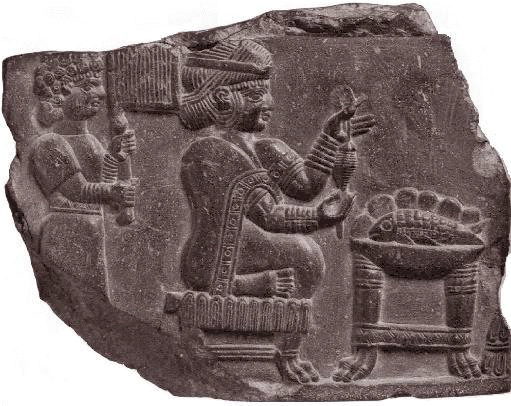
An
elegantly coiffed and well fanned Elamite woman sits on a lion footed
stool winding thread on a spindle. Her servant seems to have settled for
perms. Guess what's for dinner tonight? This five-inch fragment is dated
8th century BC. It was molded and carved from a mix of bitumen, ground
calcite, and quartz. The Elamites used bitumen, a naturally occurring
mineral pitch, or asphalt, for vessels, sculpture, glue, caulking, and
waterproofing. This elegant Elamite Lady has quite appropriately taken
residence in Paris, at Musee du Louvre.
|
|
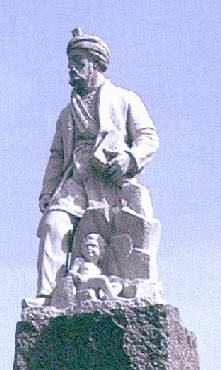
Ferdowsi Tousi, at Ferdowsi
Square, Tehran. |
|
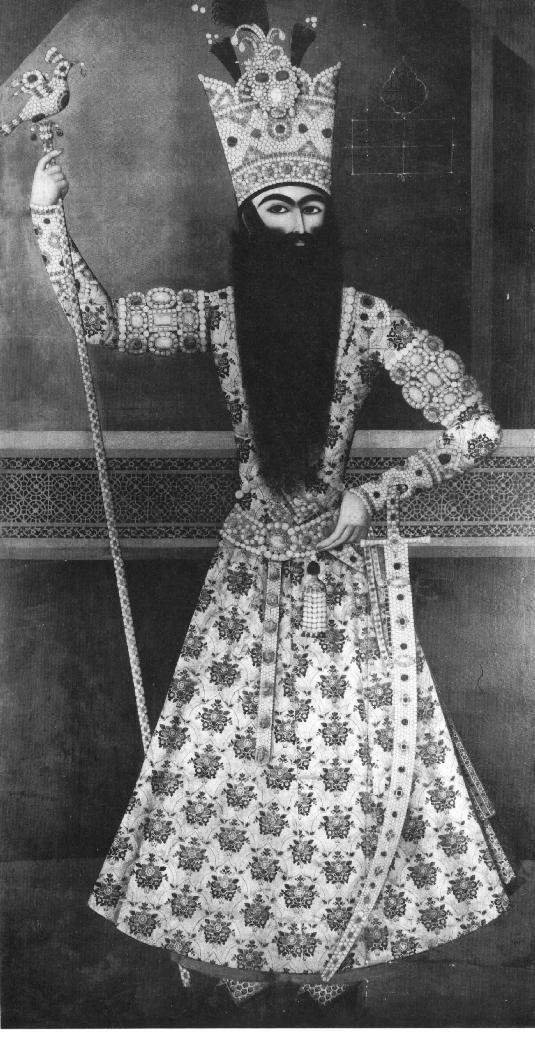
Fath Ali Shah Ghajar, painting
by Mir Ali, Negarestan Museum, Tehran
|
|
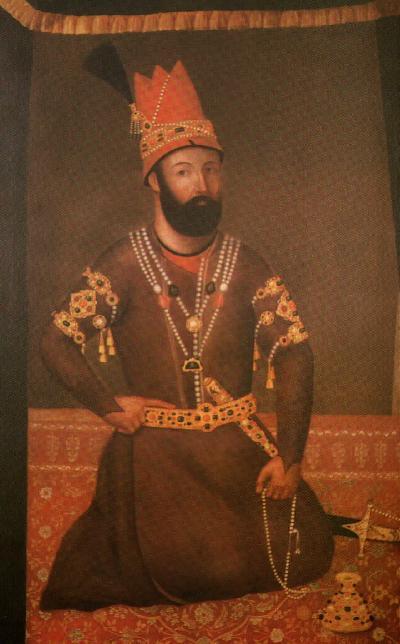
Nader Shah
Afshar
1736-1747
Victoria & Albert Museum, London
|
|
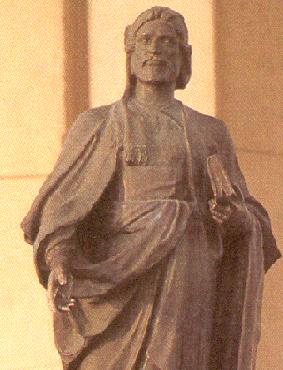
Nezami Ganjavi
|
|

Greek Pendant showing
Alexander and Roxane
Alexander married Roxane who was
Darius III's daughter, he also urged his Generals to follow suit and wed
Persian wives. They had a son together. Mother and son were murdered soon
after Alexander died.
|
|
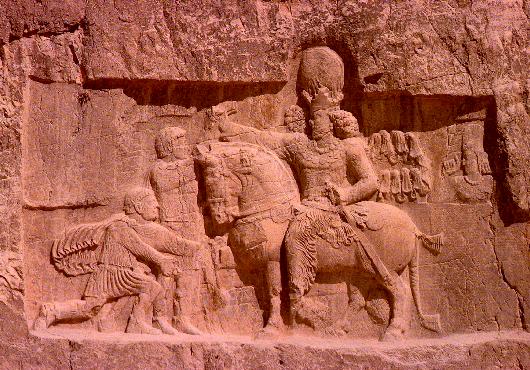
With
Phillp the Arab on his knees and Valerian the Roman Emperor captured,
Shahpour I recorded his Triumph over the Romans, (AD 259 at Edessa
defeating a force of 70,000) here at Nagsh-i Rostam.
|
|
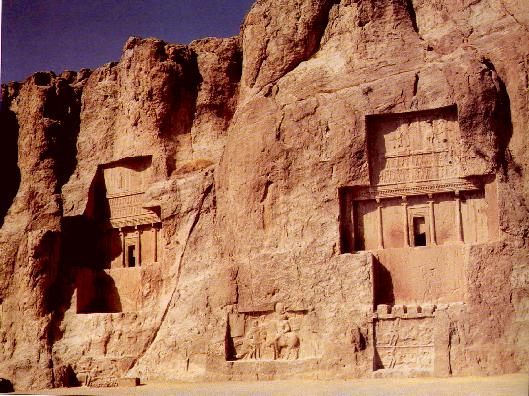
Four
Achaemenid kings- Xerxes I, Darius I, and II, and Artaxerxes I- had
their tombs cut into the cliff face at Nagsh-i Rustam. Only Darius I's
on the right is identified by inscriptions. Each + shaped facade is
over 75 feet high and 60 feet wide. The reliefs below the tombs were
added in the 3rd century AD by Sassanian kings. The one in the middle
shows Shahpour's Triumph over the Romans (Valerian). The cross + has
deep spiritual meaning signifying ascendance to the supreme.
|
|
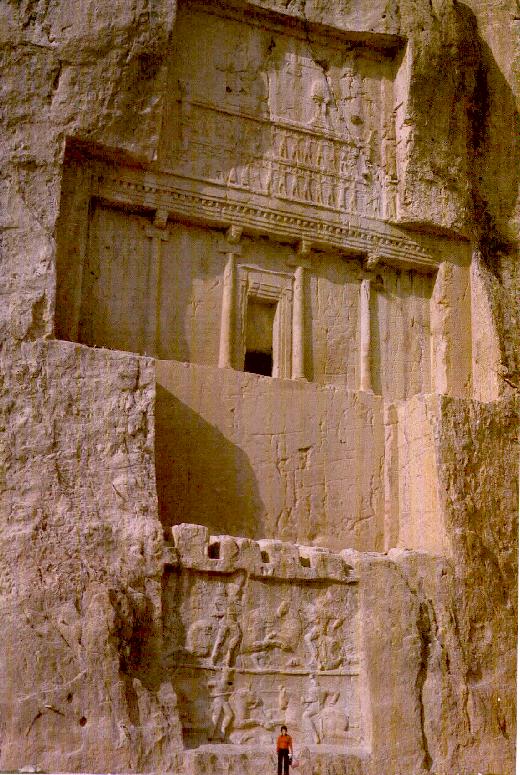
Darius the Great's crypt
contains three chambers, each with three burial cists. The reliefs
underneath were added 600 years later by the Sassanians. These depict
Ardeshir and his son Shahpour in combat and defeating the Parthians.
|
|
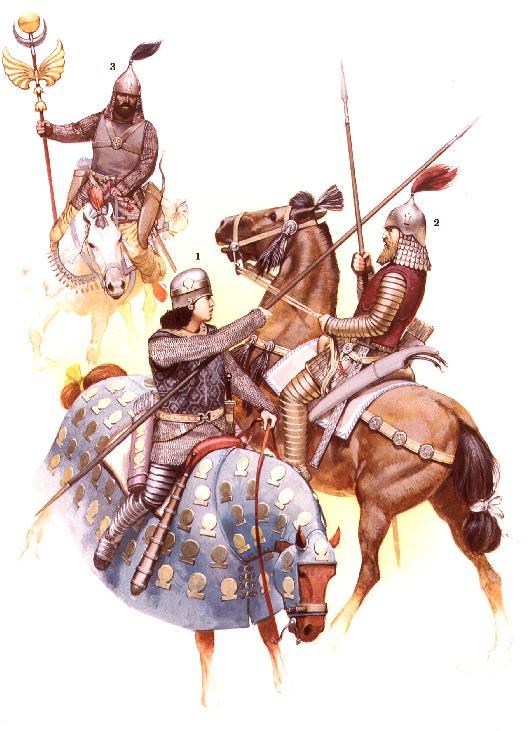
1: Early Sassanian cataphract,
3rd century AD
2: Parthian cataphract
3: Sassanian standard bearer
|
|

1: Sassanian clibanarius, 7th C.
AD
2: Sassanian standard bearer
Under Shahpour I's brilliant
leadership the Sassanian army gave much of its attention to winning
back the cities of Syria that had fallen to Rome during the Parthian
Era.
Sassanian forces were described
by Ammianus Marcellinus, a 4th century historian with the Roman Army
as ".. clad in iron, with all parts of their body covered,
including their heads."
Shahpour's campaigns culminated
in the capture of Valerian the Roman Emperor in AD 259 at Edessa
defeating a force of 70,000.
Upon his return from the Syrian
campaign, Shahpour set building himself a city known as Bishapur (the
beautiful city of shahpour). Roman Ghirshman the French archaeologist
described it as the Sassanian Versailles believed to have had
about 80000 inhabitants.
|
|
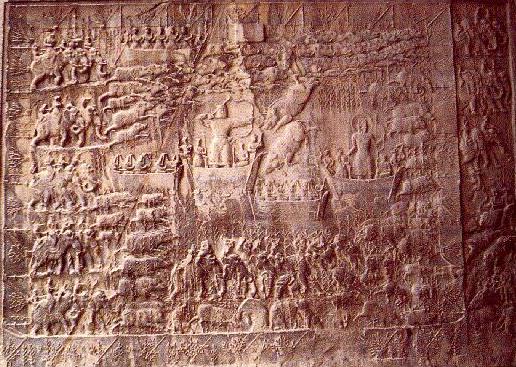
Royal hunt rock relief, great
groto, Tag-i Bustan. Shows the king in the centre from a boat; he is
accompanied by a 2nd boat of harp playing musicians. The king is Khosro
II.
|
|
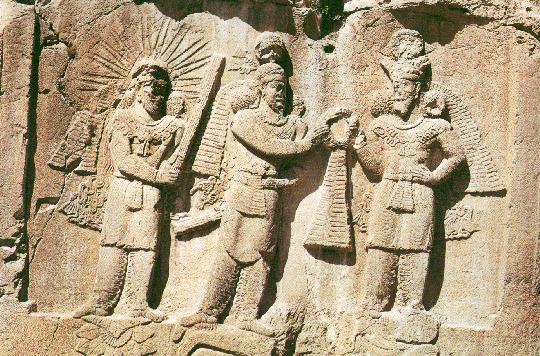
Investiture of Ardeshir I,
between deities Ahura Mazda and Anahita |
|

Great Groto at Tag-i Bustan
Top: Investiture of Ardeshir I
Bottom: Great Knight
|
|
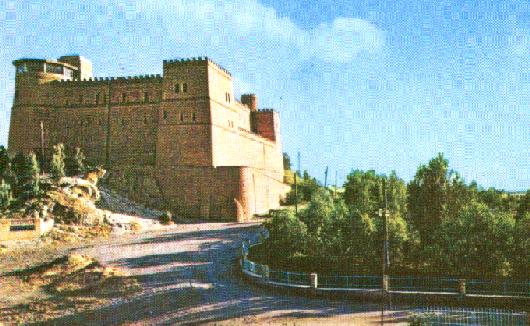
Susa's
Chateau, so named because it was reconstructed in 1890 by the French
Archaeologist Jacques de Morgan from recycled Elamite and Achaeminian
bricks. This is close to the Susa Acropolis which he dug. Up to 1927 the
French had a monopoly agreement for excavations in Iran hence the Louvre
has an extensive collection of Elamite Artifacts.
Susa always
the pride and joy of the Elamites and the Achaemenids, was settled
around 4500 BC and lasted over 5000 years before finally demolished by
the Mongols in the 13th century AD.
|
|
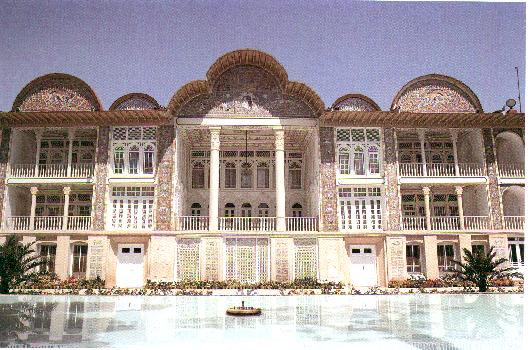
Bagh Eram, ( Eram Garden )
Shiraz.
This delighful house and garden
used to belong to the Ghavam family. Ghavam Saltaneh was the Prime
Minister of Iran during the Reign of Mohamad Reza Shah.
|
|
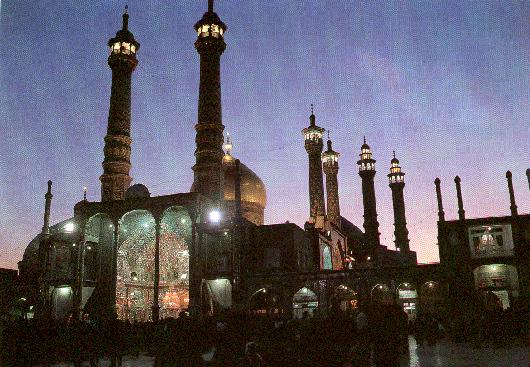
Qom, Mausoleum of Fatima |
|
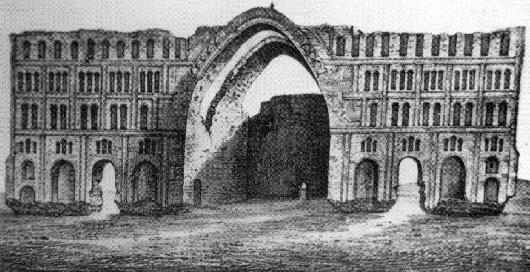
Taq-i
Kasra (arch of Khosro), Ctesiphon. Drawn 1824 by Captain Hart.
Khosrow I
was renewned for his military and diplomatic skills and is reputed as
the "Just" Anoushirvan Adel. During his time the game
of chess had been brought to his court from India, and his chief
minister Buzarjomehr is reputed to have invented Backgammon.
The splendor
of Khosrow's palace at Cetesiphon ( Tag-i Kasra ) is legendry. The
Throne room was more than 110 ft high. The massive barrel vault covered
an area 80ft wide by 160 ft long. His throne was supported by winged
horses and cushioned in gold brocade, was set at the back behind
curtains, open only during audience. His huge silver and gold crown was
adorned with pearls, rubies, and emerald. The crown so heavy that it had
to be suspended above his head by a gold chain so fine that visitors
were unable to tell that he was not wearing it. When people kneeled in
front of him, it was on silk rugs with a garden design which was placed
on marble floors.
|
|
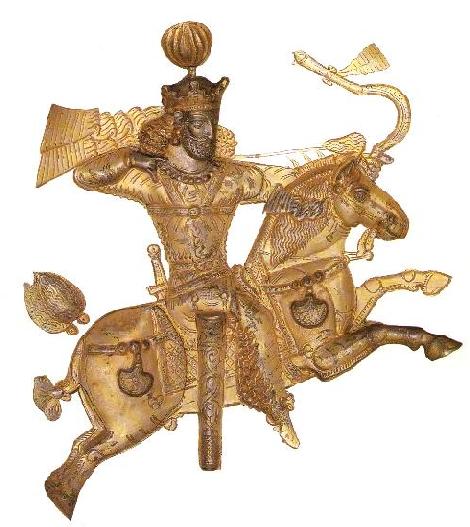
Shapour II
Details of gilded silver plate
|
|
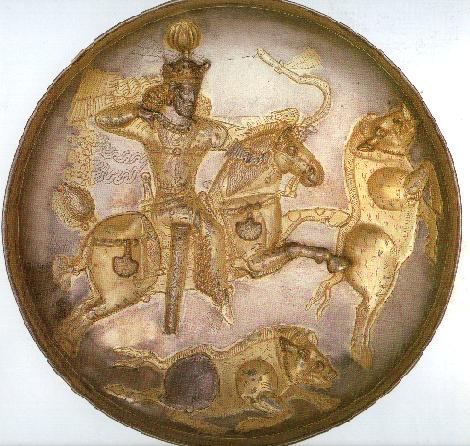
Gilded silver plate, Freer Art
Gallery |
|
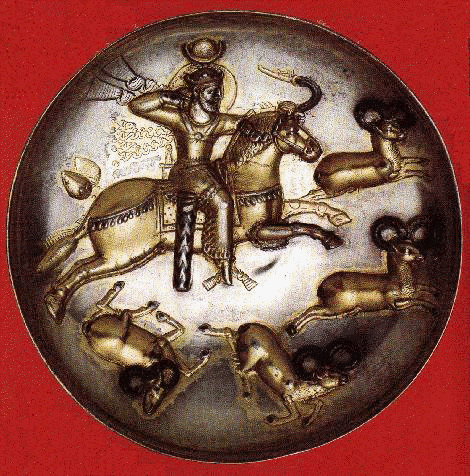
Gilded silver plate, Shapour II
|
|
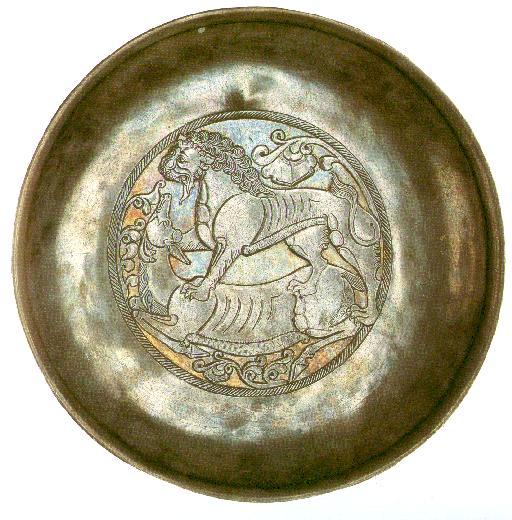
Silver Dish 7th Century from
Khorasan
Hermitage Museum, St. Petersburg
|
The Lion
Overpowering a deer is a recurring theme in Persian Art.Believed
to have the same connotation as Herkle defeating the Water-Ox,
or Mithra killing the bull.
|
|
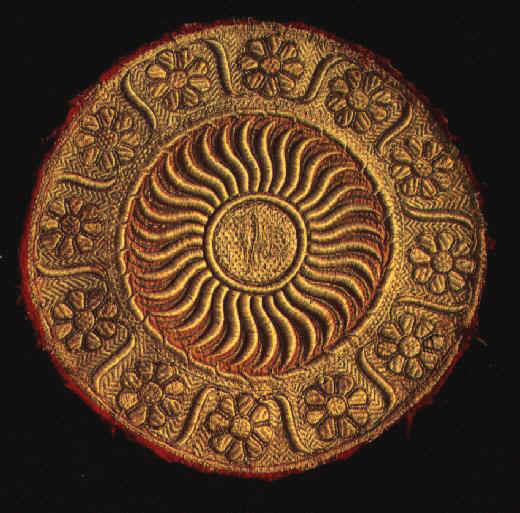
Central radiant Sun.
Much like the motifs at persepolis |
|

Victory stele, showing the symbol
of the Sun at the summit, 2250 BC.
Excavated from Susa (Shoush). Musee du Louvre, Paris.
|
|
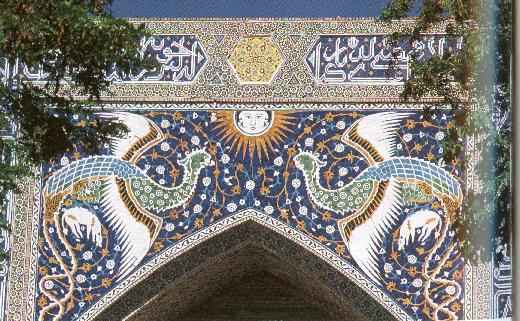
The Sun shines bright at the
center of this gateway.
17th Century Bukhara. |
|
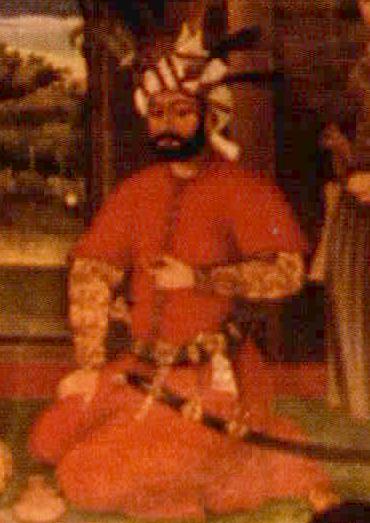
Shah
Tahmasb Safavi
Detail of a
large historical painting on the west wall of the audience hall of the
Chehel Sutoon. |
|
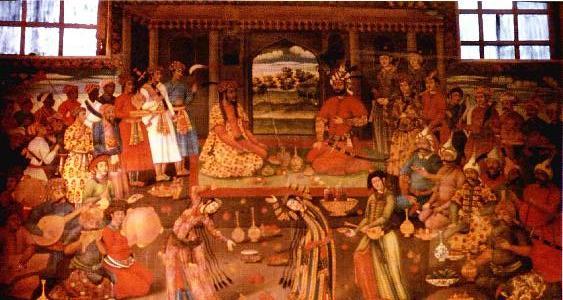
Shah
Tahmasb safavi receives Homayoun Padeshah of India.
Large
historical Painting, west wall of the audience hall of Chehel sotoon.
Maydan Shah, Isfahan. Painted about 1660. Cleaned and restored 1965-74.
|
|
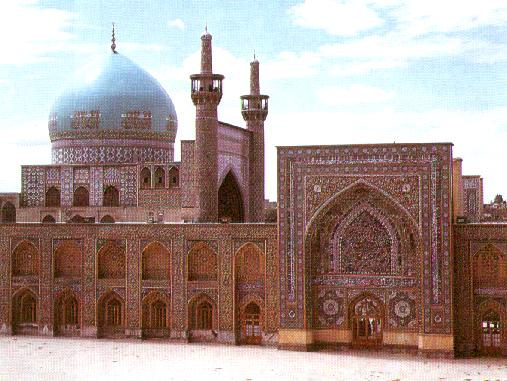
Goharshad Mosque, Mashad

Emam Reza Mausoleum,
Mashad
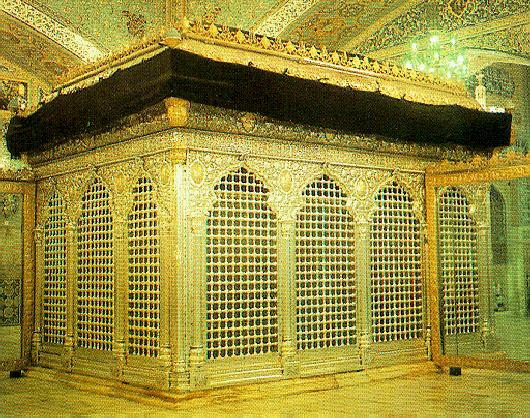
Emam Reza Shrine Mashad
|
|
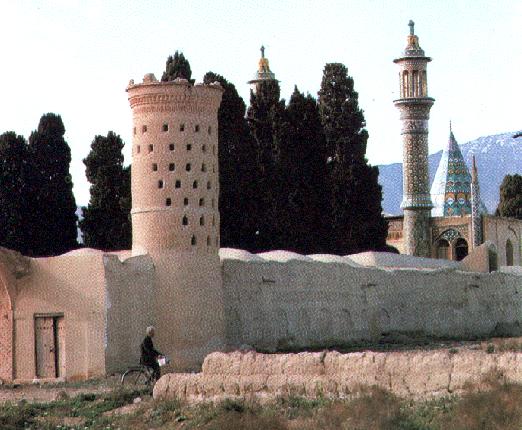
Shazdeh Ebrahim Mausoleum, Kashan
|
|
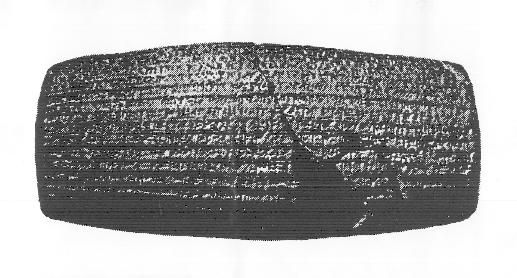
Cyrus's Charter of the
Rights of Nations
Inscribed on a clay cylinder in cuneiform
discovered in 1879 now in The British Museum, London. |
|
Persepolis
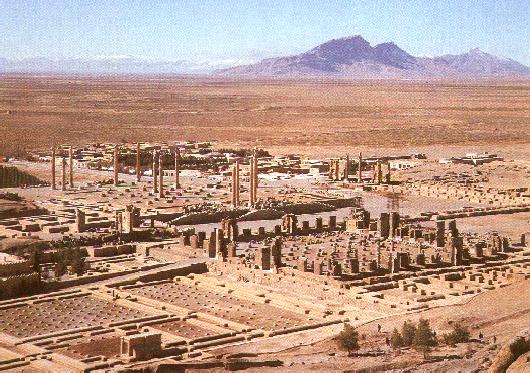
General view Persepolis, Fars,
Iran
|
Its ancient
name was Parsa to ancient Persians, it modern
name is Takht-e Jamshid, (Persian: Throne
of Jamshid), to Iranians it was the capital of the Achaemenian
kings of Iran (Persia). Persepolis is located about 50 kms
northeast of Shiraz in the province of Fars
in southwestern Iran. It was set on fire by Alexander upon his
defeat of Darius III.
|
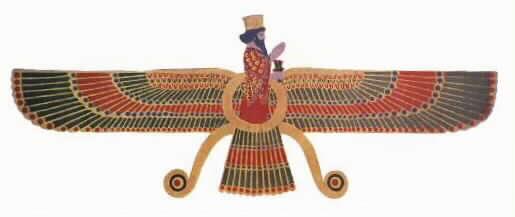
Faravahar or Farohar,
Zoroastrian Symbol
Color reconstruction from Persepolis
|
The Faravahar,
or Farohar, is to remind one of the purpose of
life on this earth, which is to live in such a way that the soul
progresses spiritually and attains union with Ahura-Mazda
(the Wise Lord); this state is called Frasho-kereti in
Avesta.
In the
center of the figure is a circle which represents the soul of
the individual. For the soul to evolve and progress, it has two
wings. In each wing there are five layers of feathers. These
remind one of the five jzhirums with which the soul is linked.
To achieve the ultimate goal of reaching Ahura-Mazda, the soul
has to pass through all the jzhirums. The five layers can also
represent the five Divine Songs (Gathas) of Zarathustra,
the five divisions of the day (Gehs), and the five senses
of the human body.
In nature,
there exist two opposing forces: Spenta-Mainyu the
good mind or assar-i roshni and Angre-Mainyu
the wicked mind or assar-i tariki. A continuous conflict
goes on in nature between these two. A person's soul is caught
between the two and is pulled by each from side to side. The two
long curved legs on either side of the circle represent these
two forces.
To help the
soul balance itself between these two forces, the soul is given
a rudder in the form of a tail. This tail has three layers of
feathers, which reminds one of the path of Asha Humata
(Good Thoughts), Hukhta (Good Words), and Hvarasta
(Good Deeds), or Manashni, Gavashni,
and Kunashni by which the soul is able to make
its own spiritual progress.
The head of
the figure reminds us that Ahura-Mazda has given every soul a
free will to choose either to obey divine universal natural laws
or to disobey them.
The figure
also has a pair of hands which hold a circular ring. The ring
symbolizes the cycles of rebirths on this earth and other planes
which the soul has to undergo to make progress on the path of
Asha. If these divine laws are obeyed through Manashni, Gavashni,
and Kunashni, our soul will be able to attain union with
Ahura-Mazda. This far-off event, towards which the whole of
creation moves, is called Frasho-kereti.
|
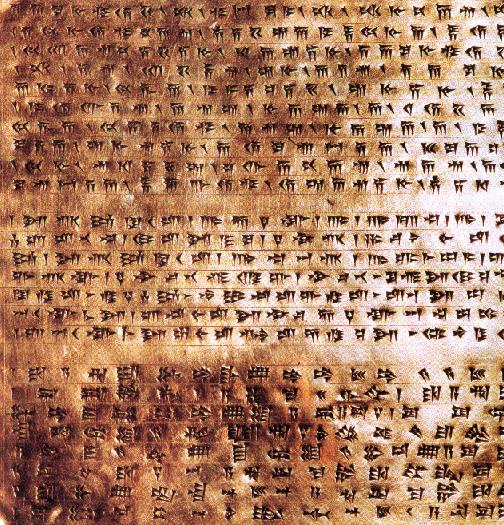
Cuneiform script, gold tablet
discovered by German Architect Freidrich Krefter, Apadana Palace
Pesepolis, 1933. Inscribed in Old Persian, Elamite, and Babylonian, it
identifies Darius I as the builder of Apadana.
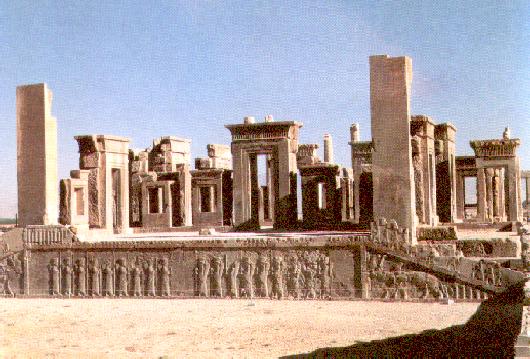
Apadana Palace, Persepolis
Built
by Darius I of the Achaemenids this palace is the most awe inspiring
monument of the Persians. To be there and get close to the life size
figures on the Bas-relief takes one back thousands of years, or maybe
brings them to the present. The atmosphere instantly portrays the
feeling of magnificence mixed with outrage emotion towards those
ignorant souls who through history have made its distruction their
life's ambition.
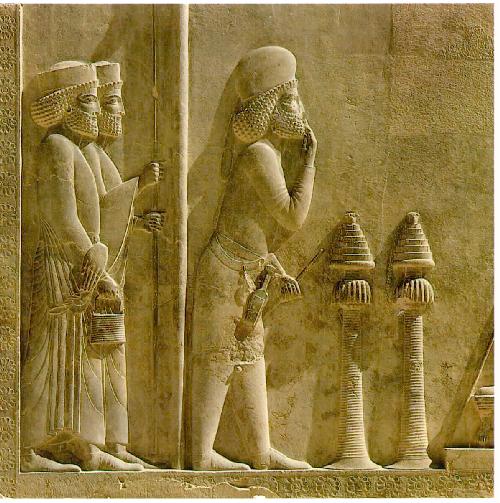
A Mede at the foot of
Darius I while two guards stand in attention,
Apadana Palace, Persepolis

Darius
the Great
(521-486 BC)
Enthroned
in Peresepolis, the magnificent city that he built, Darius I firmly
grasps the royal scepter in his right hand. In the left, he is holding a
lotus blossom with two buds, the symbol of royalty.
This
Bas-relief is at the Apadana Palace, Persepolis, showing Darius
receiving Iranian delegates at audiance during the New Year (Nowrouz,
March 21st) festivities.
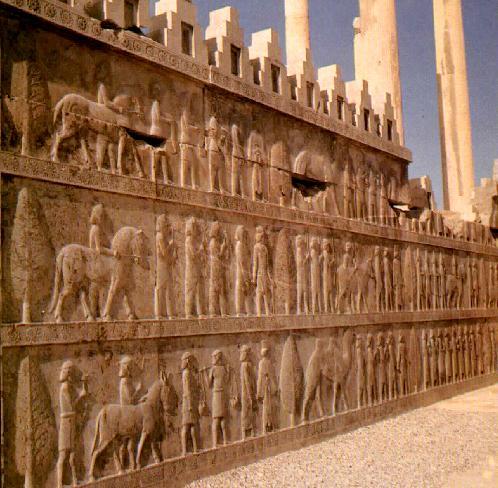
The reliefs
portray different peoples who were part of the Achaemenid Empire, each
group identified by its native costume. The tributaries, carry
indegenous valuable gifts to be offered to the king during the New Year
ceremony.
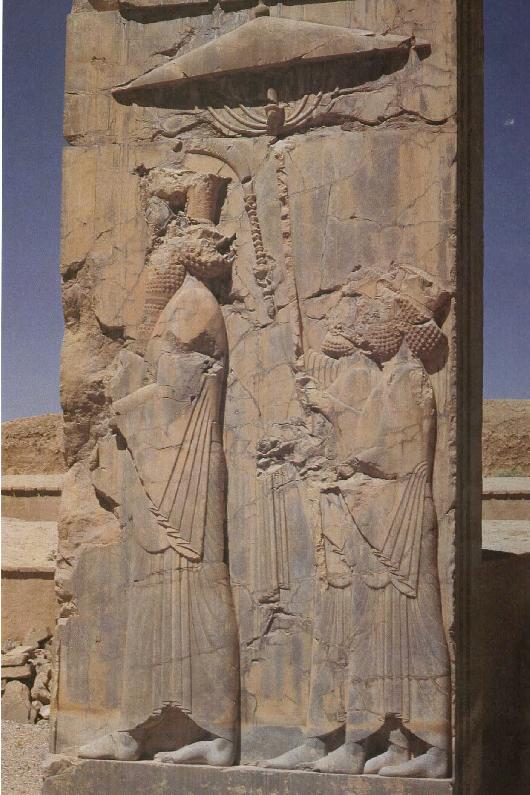
King under the parasol, south door
of central building Persepolis
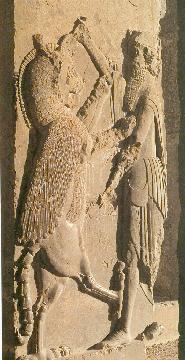
Fighting a griffin, Darius
palace, Persepolis.
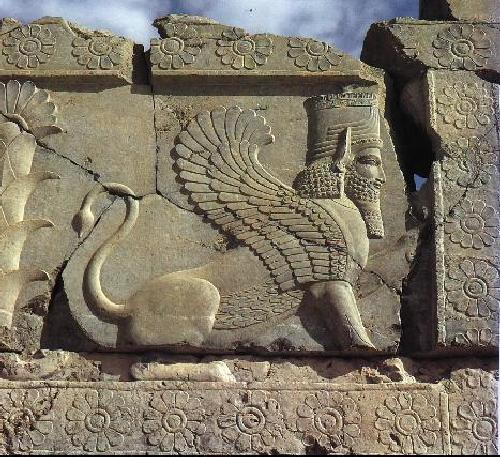
Majesty of a lion,
high-flying as a bird, intellect of a human; Bas-relief Persepolis
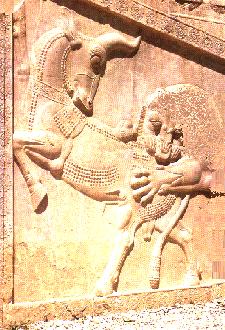
Bas Relief Persepolis
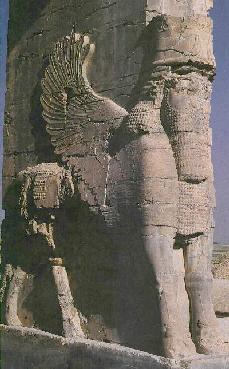
Winged
bull with human head, Xerxes' gate Persepolis
|
|
Pre-Achaemenid:
|
|
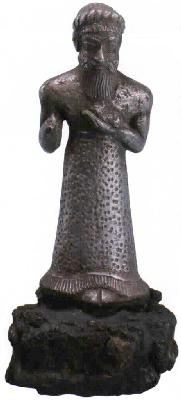 
Elamite king at worship,
gold and silver statuette 12 Century BC,
3" high
discovered 1904 by archaeologist Roland de Mecquenem at Susa's
(shoush) acropolis.
|
|
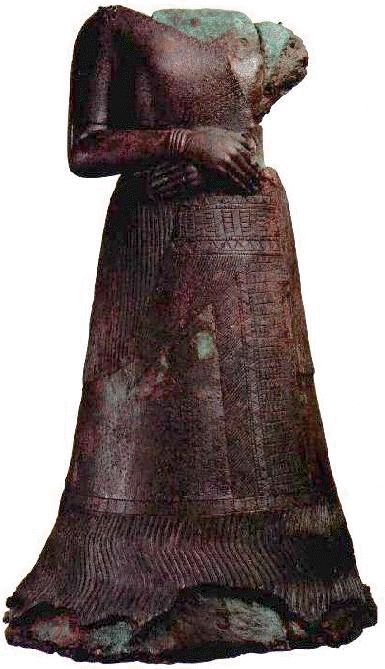
14th Century BC Statue of
Queen Napir-Asu of Elam
found in 1903, temple of Ninbursag,
Susa (Shoush), it weighs 3760 pounds |
|
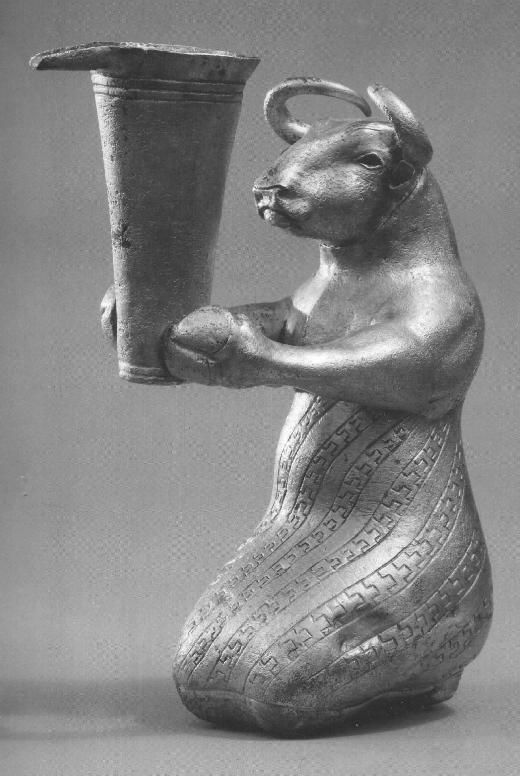
Silver bull
figurine c.3000BC
Metropolitan Museum of Art,
New York
|
|
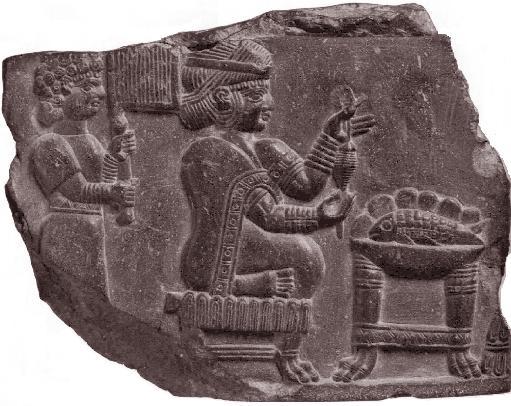
An
elegantly coiffed and well fanned Elamite woman sits on a lion footed
stool winding thread on a spindle. Her servant seems to have settled for
perms. Guess what's for dinner tonight? This five-inch fragment is dated
8th century BC. It was molded and carved from a mix of bitumen, ground
calcite, and quartz. The Elamites used bitumen, a naturally occurring
mineral pitch, or asphalt, for vessels, sculpture, glue, caulking, and
waterproofing. This elegant Elamite Lady has quite appropriately taken
residence in Paris, at Musee du Louvre.
|
|
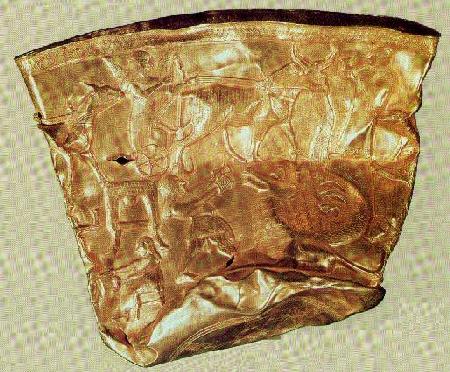
What Robert Dyson the
archaelogist from the University of Pennsilvania called "the
discovery of a lifetime". Gold cup from Hasanlo, northwest Iran.
Click on the image above to see Dyson, his discovery and his jeep called
Darius in 1957.
|
|
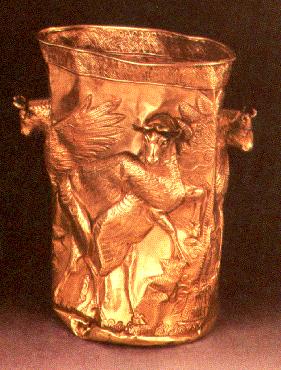
Golden Vase, From Tape Marlik,
1000 BC |
|
Achaemenid:
|
|
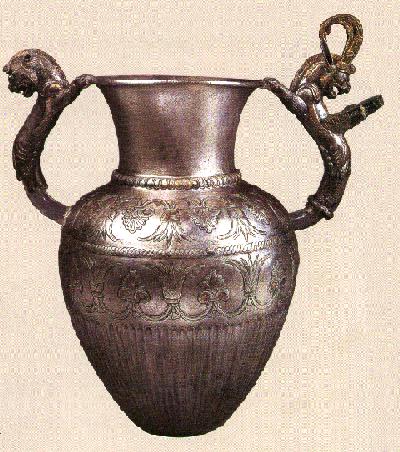
Amphora silver, used for wine at
banquets. This is like the one carried by the Armenian delegate at
Apadana wall relief
|
|
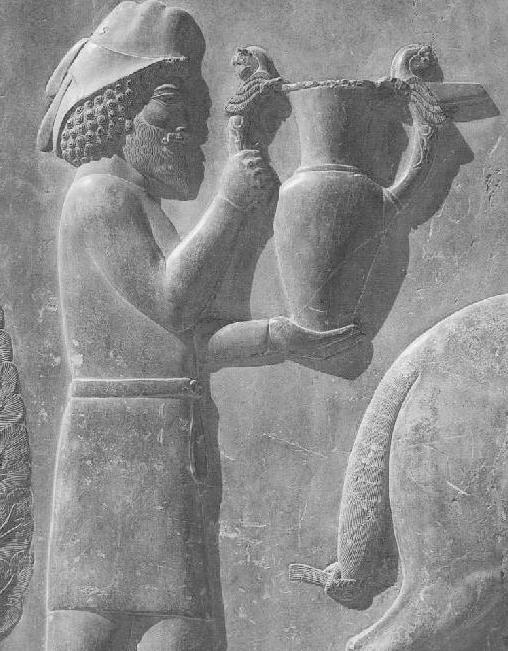
An Armenian carrying an amphora,
these were used for wine at banquets. Rearing lions make the handles one
of which is also the spout
|
|
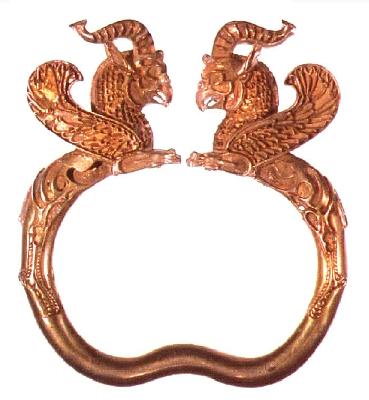
An exquisit example from the
"Oxus Treasure", similar to the armlet carried by the Lydian
on the rock relief at Apadana, Persepolis.
|
|
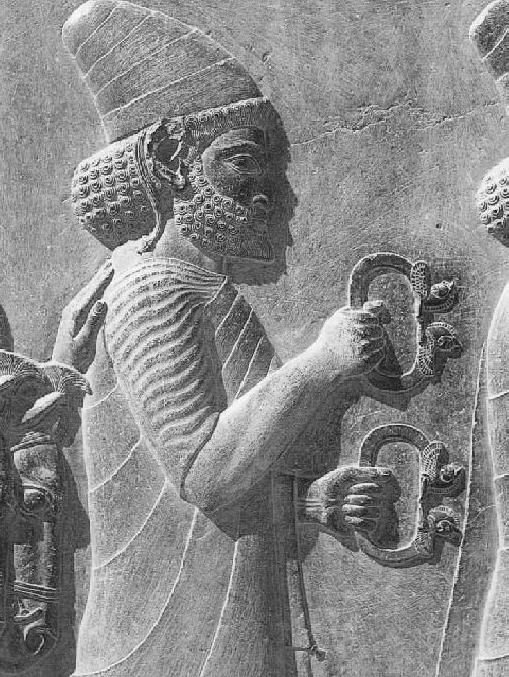
A Lydian bringing gold armlets
to present to the king. Apadana Audience Hall.
|
|

Gold Belt Buckle Achaemenid
|
|
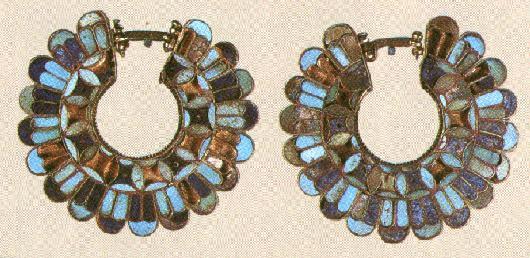
Pair of
earings inlaid with turquoise and lapis lazuli. Achaemenid period worn
both by men and women
|
|
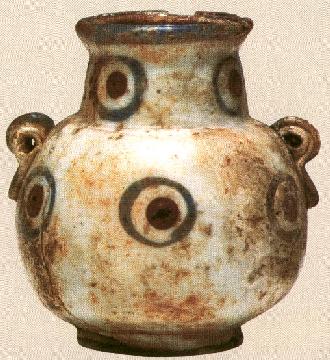
Glass Jar, Achaemenid |
|
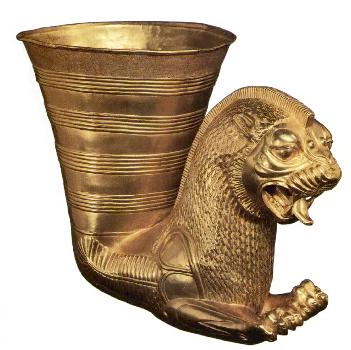
Gold Rhyton, Achaemenid
period
|
|

A
gold bowl similar to one's depicted in Persepolis. The lion motif
handles are common in Persian Art. This bowl was presented to Peter
the Great, Czar of Russia by the governor of Siberia, probably from a
Scythian tomb.
|
|
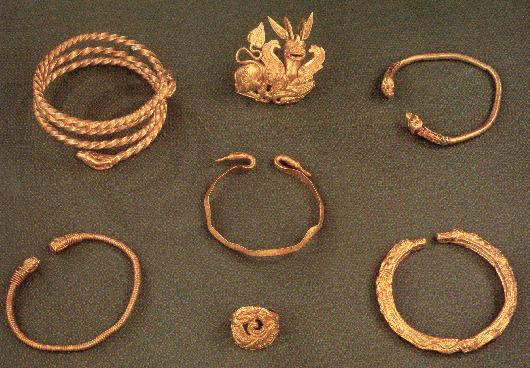
Achamenid Gold Jewelery, part of
the Oxus Treasure
British Museum, London
|
|
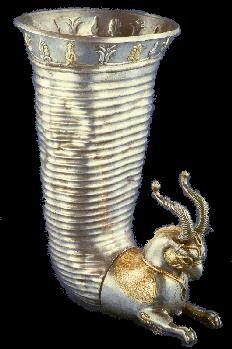
Gilded silver Rhyton, Achaemenid
|
|
Parthian:
|
|
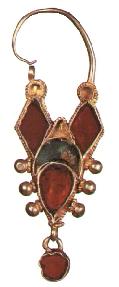 ............. .............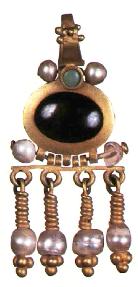
On the left, 3rd century AD, gold
& spinel (ruby like gem) from Hatra
On the right, 2nd century AD, gold and pearl, inset with garnet, from
Seleucia.
|
|

Parthian fashion of 2nd century
AD, wearing a flowing gown, headress, and jewels.
|
|
Sassanian:
|
|
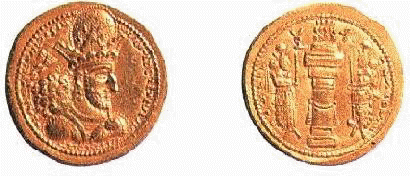
Sassanian gold dinar of
Shapour II, circa 310 AD.
|
|
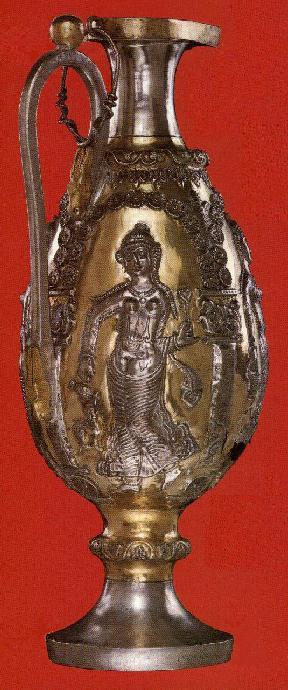
Ewer gilted silver, late
Sassanian with dancer motif, repeated on all sides.
|
|

Gilded silver plate, Freer Art
Gallery
|
|

Shahpour I grasps the arm of
Valerian
the Roman Emperor signaling his capture AD 260
|
|

Silver horse
with gold foil enhancements, 3rd century AD, Sassanian. Served as a
ceremonial rhyton, with the forelock as the funnel and an opening in the
chest as the spout.
|
|
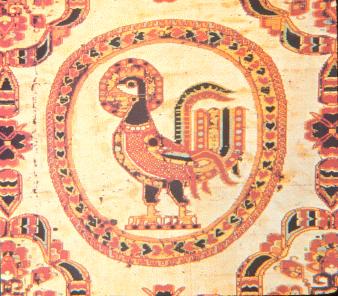
Middle section of a Sassanian
Tapestry
|
|
Post-Islamic:
Metalwork:
|
|
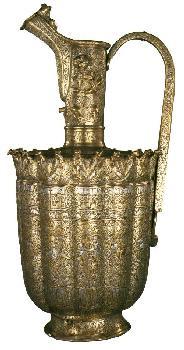
Brass
ewer, inlaid with copper and silver, late 12th century Herat, Brithish
Museum , London. Click on the image above to see details of
a larger picture.
|
|

10th century gold jug,
inscribed Bakhtiar-ibn Moazedowleh
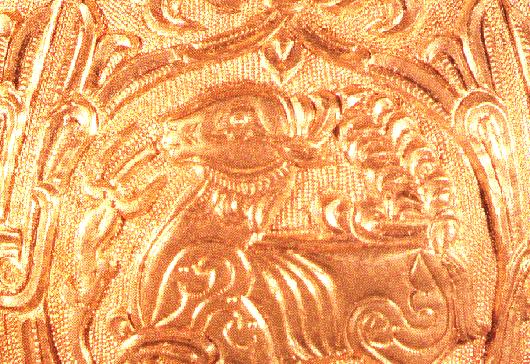
Detail of 10th centuray gold jug
|
|

Gold Vase, old immitation,
possibly by Parvaresh in Esfahan |
|
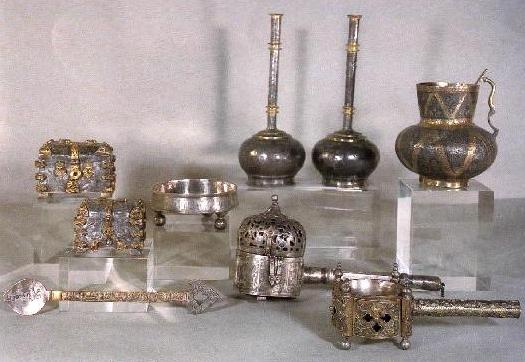
Various
objects- silver with gilding from North of Iran, 12th century, L.A.
Mayer Memorial Institute, Jerusalem
|
|
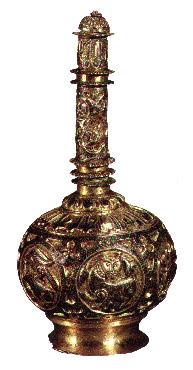
Rosewater sprinkler, gilded silver
and niello inlaid. 12th century AD. Freer Gallery of Art, Washington
|
|
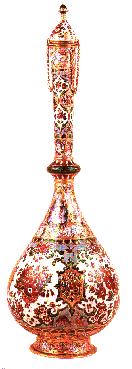
Rosewater
sprinkler, enamelled gold, late 18th century
|
|
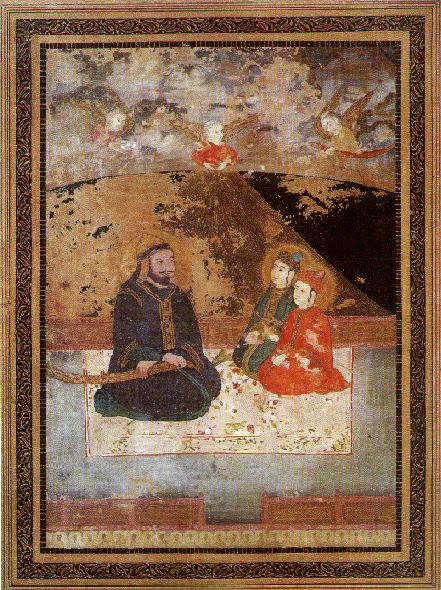
Amir
al Momenin, and his two sons, Emam Hassan and Emam Hussein. Late 16th
century. Unusual as it portrays them in helmets.
|
|
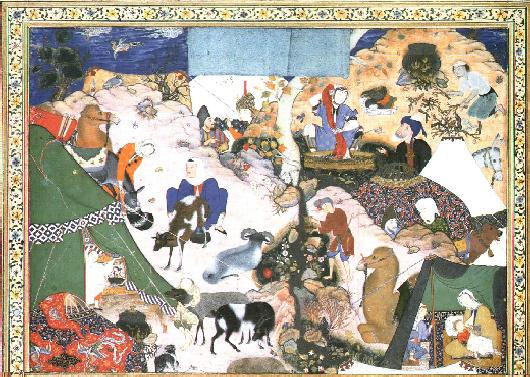
From the book of Khamseh Nezami
done for Shah Tahmasb, done by Mir, Seyed Ali, Tabriz, 1540. Fogg Art
Museum, Harvard University, Cambridge, MA
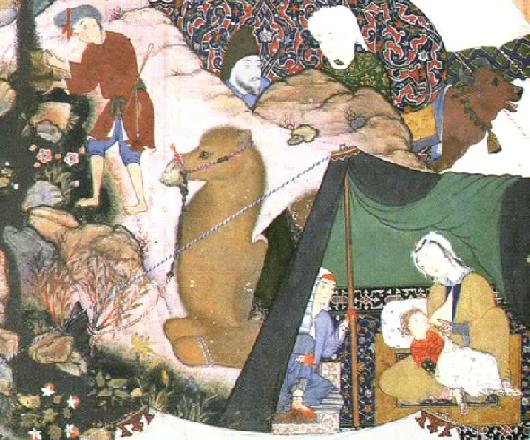
Detail of Camp Life
|
|
 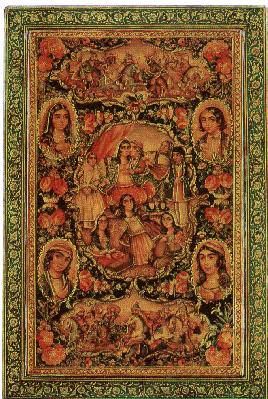
Two mirror lids by Mirsa Baba,
late 18th century from Shiraz. The one on the left depicts fighting
scene in the middle. The one on the right possibly a wedding gift also
shows fighting scenes on top and bottom.
|
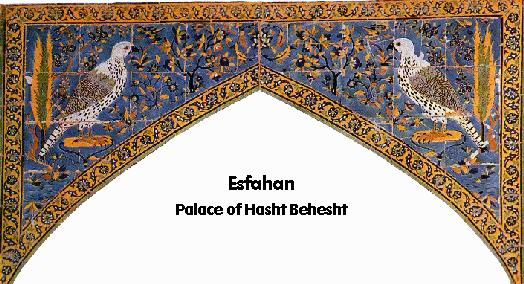 |
|
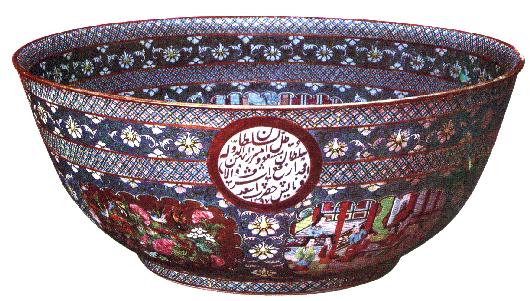
Porcelain services from China and
Japan have been imported with great difficulty since the 18th century.
An extensive collection of such Chinese porcelain is housed at the
Golestan Palace in Tehran. The bowl above is 60cm in diametre, part of a
dinner service from Canton possibly for 200-300 guests. The Medalion
bears the name of the orderer. Zel Sultan the son of Nasser Din Shah
dated 1297 hejri/1901 AD.
|
| |
| |
| |
| |
|
Iran In Louvre Museum |
|
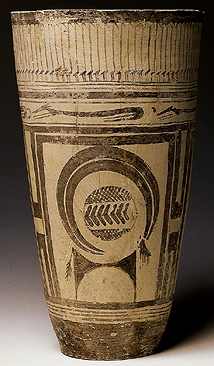
|
|
Boisseau de Suse I
Suse: nécropole archaïque
Vers 4000 avant J.-C.
Terre cuite
H 0,285 m;
L 0,160 m
Sb 3174
Les vases peints déposés dans les tombes des premiers Susiens
illustrent, à la veille de son extinction, l'apogée de la
tradition néolithique des peuples montagnards descendus dans la
plaine. Les formes sont simples et harmonieuses; le décor hardiment
stylisé. On reconnaît en haut une frise d'échassiers étirés en
hauteur; au-dessous, des chiens courants, étirés horizontalement,
et en bas, un grand bouquetin aux formes géométriques et aux
cornes démesurées, dessinant un ovale presque parfait. Cette
stylisation rappelle de façon trompeuse celle de signes
pictographiques. En réalité, elle est purement décorative, comme
l'atteste sa diversité d'un vase à l'autre. Avec de tels vases
pouvaient être mis à la disposition des morts des objets, telle
une hache en cuivre, importés d'Iran central.
|
 |
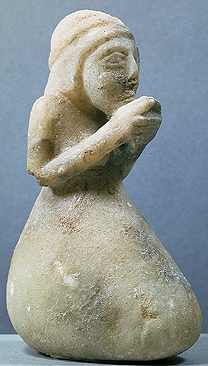 |
|
Orante
Suse, époque récente d'Uruk
Vers 3300 avant J.-C.
Statuette, albâtre
H 11,5 cm; L 4,5 cm
Sb 69
L'adoption de la civilisation urbaine de type sumérien amena les
Susiens à créer des arts appelés à devenir classiques. Rompant
avec la stylisation purement décorative des périodes préhistoriques,
ils adoptèrent le réalisme pour idéal. C'est ainsi qu'ont été
taillées des statuettes de dévotes, à la fois délicates et
pleines d'humour, agenouillées dans leur robe selon la tradition
propre au monde iranien.
|
 |
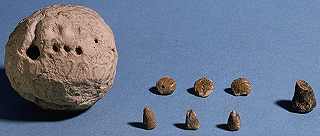 |
|
Pièces de comptabilité archaïque
Suse, époque récente d'Uruk
Vers 3300 avant J.-C.
Argile légèrement cuite
Ø 6,5 cm
Sb 1927
Obligés de gérer la richesse considérable suscitée par le développement
de type urbain, les Susiens créèrent une comptabilité. Ils
commencèrent par matérialiser les nombres par de petits objets
d'argile analogues aux cailloux utilisés par d'autres civilisations
antiques et qui ont donné son nom à notre calcul. Ils les plaçaient
dans des boules creuses d'argile pour éviter leur dispersion. Le
nombre ainsi symbolisé pouvait être reporté sous forme d'encoches
à la surface de la boule-enveloppe sur laquelle on apposait le
sceau désormais cylindrique du scribe, comme garantie d'authenticité.
Ces encoches sont les premiers signes graphiques proprement dits,
que l'on reporta bientôt sur de petits pains d'argile ou "tablettes"
en attendant de préciser leur signification par des signes
conventionnels. Le processus d'invention de l'écriture était ainsi
engagé, grâce à la comptabilité.
|
 |
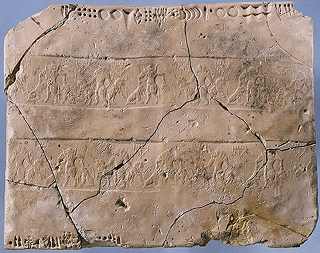 |
Tablette géante proto-élamite
Suse. Tell de l'Acropole
Epoque de Suse III ou époque proto-élamite (vers 3100-2850 avant J.-C.)
Argile crue
H 21 cm; L 26,7 cm
Sb 2801
L'écriture proto-élamite, toujours pas déchiffrée, figure sur cette
tablette géante de comptabilité dont les empreintes de cylindre évoquent
les triomphes alternés du lion et du taureau représentés en attitude
humaine.
 |
 |
|
Déesse élamite
Suse
Vers 2100 avant J.-C.
Statue, calcaire
H 1,09 m
Sb 54
Le prince de Suse, Puzur-Inshushinak, réussit à créer un
empire élamite double englobant la plaine susienne de langue sémitique,
et le plateau de langue élamite. Il inscrivit ses monuments en deux
langues: l'akkadien sémite et l'élamite rédigé en une écriture
linéaire nouvelle, encore mal déchiffrée. La statue à
inscription bilingue représentant la grande déesse -probablement
Narunte ou Narundi- lui attribue l'aspect de l'Ishtar mésopotamienne,
trônant sur des lions. Sa tiare à cornes est semblable à celle
des divinités du temps de Gudéa, prince de Lagash, sensiblement
contemporain.
|
 |
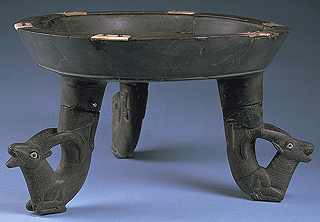 |
|
Coupe tripode aux bouquetins
Suse
Début du IIe millénaire avant J.-C.
Mastic de bitume
H 18,5 cm; Ø 28 cm
Sb 2737
La prospérité dont bénéficia Suse au début du IIe millénaire
est attestée par la richesse du mobilier des tombes. Outre des
parures d'or et d'argent, on plaçait à la disposition des morts de
la nourriture dans de la vaisselle commune et dans des vases de luxe
taillés dans le mastic de bitume pour imiter une pierre exotique.
L'exemple le plus remarquable est une coupe tripode reposant sur des
pieds en forme d'avant-train de bouquetins.
|
 |
 |
|
Statuette composite
Bactriane
Début du IIe millénaire avant J.-C.
Chlorite et calcaire
H 17,3 cm
AO 22918
A la fin du IIIe millénaire et au début du IIe, la civilisation
trans-élamite essaima au-delà de l'Iran, jusqu'aux confins de
l'Asie Centrale, en Bactriane (Afghanistan du Nord). Le mobilier des
tombes creusées à proximité de forteresses très élaborées
comprenait des objets d'usage courant et de luxe, témoins d'une
civilisation apparentée à celle de l'Elam. A côté de haches
d'apparat servant d'insignes de dignités, comme en Elam, on déposait
dans les tombes des statuettes composites de femmes dont la robe en
"crinoline" est semblable à celles des reines d'Elam;
cette robe a été traitée avec l'archaïsme du "kaunakès"
de l'époque des dynasties archaïques.
|
 |
 |
|
Dieu élamite
Suse
Vers 2000 avant J.-C.
Cuivre et or
H 17,5 cm; L 5,5 cm
Sb 2823
La dépendance culturelle de Suse à l'égard de la Babylonie
resta grande au début du IIe millénaire, alors que la ville
appartenait au royaume élamite. Les dieux étaient donc représentés
comme ceux de Mésopotamie, vêtus de la robe à volants du "kaunakès"
et coiffés de la tiare à plusieurs paires de cornes symboliques de
la puissance divine. Celui-ci se distingue par son sourire, absent
des effigies mésopotamiennes. Il était à l'origine entièrement
revêtu d'un placage d'or qui ne subsiste que sur la main.
|
 |
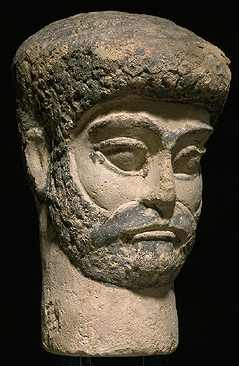 |
|
Portrait funéraire d'un Elamite
Suse
XV-XIVe siècles avant J.-C.
Terre crue peinte
H 24 cm; L 15 cm
Sb 2836
Au milieu du IIe millénaire, les Susiens enterraient leurs morts
dans des caveaux familiaux, sous le sol des maisons. Ils plaçaient
souvent à côté de la tête, sans doute voilée, un portrait exécuté
sitôt la mort venue. C'est le seul exemple en Orient d'un art funéraire
proprement dit, s'attachant à fixer les traits personnels. Celui-ci
représente l'Elamite type, au visage sévère, caractéristique
d'une rude population aux fortes affinités montagnardes.
|
 |
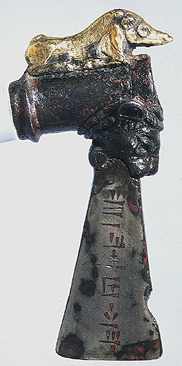 |
|
Hachette royale
Tchoga Zanbil, ancienne Al-Untash
Vers 1340-1300 avant J.-C.
Argent et électrum
H 5,9 cm; L 12,5 cm
Sb 3973
Le roi Untash Napirisha d'Elam construisit près de Suse une
capitale religieuse dominée par une tour à étages, consacrée aux
deux dieux-patrons des deux moitiés de l'empire, le haut-pays et la
plaine susienne. A son pied, la déesse-épouse du dieu montagnard,
appelée Kiririsha, avait un temple richement pourvu. On y a trouvé
en particulier cette hachette portant l'inscription: "Moi
Untash Napirisha" inscrite sur la lame crachée par la gueule
d'un lion. Une figurine de marcassin orne le talon de l'arme, qui
renoue avec une tradition spécifiquement montagnarde, créée au
Luristan au IIIe millénaire.
|
 |
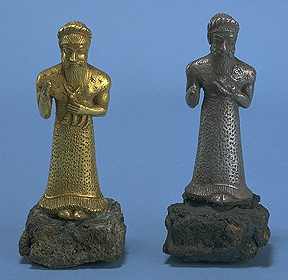 |
Orants élamites
Suse
XIIe siècle avant J.-C.
Statuettes. Or et argent
H 7,5 cm; H 7,6 cm
Sb 2758-2759
Ces statuettes représentent des orants en prière apportant un
chevreau en offrande à la divinité. Elles étaient destinées à perpétuer
un acte de culte dans un temple. Elles avaient été jointes aux offrandes
funéraires, dans une tombe royale creusée près du temple d'Inshushinak,
patron de Suse. Elle sont très représentatives de la maîtrise des métallurgistes
susiens.
 |
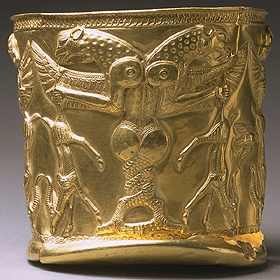 |
|
Vase aux monstres ailés
Région de Marlik (Iran du Nord)
XIVe-XIIIe siècles avant J.-C.
Electrum
H 110 cm; Ø 112 cm
AO 20281
Les premiers immigrants iraniens semblent s'être établis dans
le courant du IIe millénaire au nord du plateau auquel ils devaient
donner leur nom. Vraisemblablement nomades, ils se faisaient
enterrer dans des cimetières tels que celui qui a été exploré à
Marlik, non loin du village d'Amlash. Dépourvus de traditions
artistiques, ils s'inspirèrent, pour décorer leur orfèvrerie, de
l'art des vieilles civilisations d'Asie occidentale. Ce gobelet en
alliage naturel d'or et d'argent (électrum) porte ainsi un décor
emprunté au répertoire en honneur dans l'empire mitannien situé
dans le Nord mésopotamien: monstres ailés aux serres entrelacées,
maîtrisant des animaux.
|
 |
 |
|
Fragment du bas-relief dit "la
fileuse"
Suse
Période néo-élamite, VIIIe VIIe siècle avant J.-C.
Mastic de bitume
H 9,3 cm; L 13 cm
Sb 2834
Ce petit relief fragmentaire, d'une grande qualité, représente
une jeune femme, probablement de haut rang. Elle est assise à
l'orientale devant une table chargée d'un poisson, de pains ou de
fruits. Elle tourne le fuseau de la main droite et tend les fils de
la main gauche, tandis qu'une servante agite un grand éventail
rectangulaire.
|
 |
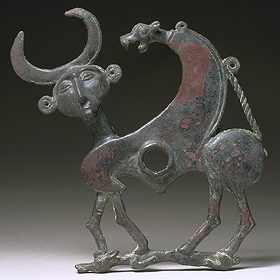 |
|
Plaque de mors
Luristan (Iran occidental)
VIIIe-VIIe siècles avant J.-C.
Bronze
H 19 cm
AO 20530
Les montagnards du Luristan avaient créé dès le milieu du IIIe
millénaire la tradition d'une riche métallurgie qui subit une éclipse
quand ils se sédentarisèrent au IIe millénaire. Cette tradition
reprit son essor avec le retour du nomadisme, du XIIe au VIIe siècle.
Les bronziers montagnards affectionnaient les mêmes figures que les
peuples urbanisés des plaines, mais en les stylisant selon l'esprit
propre aux nomades restés en marge de l'histoire. Sur cette
remarquable plaque de mors historiée, ils représentèrent un génie
cornu, à l'aile terminée par une tête de fauve piétinant un
bouquetin.
|
 |
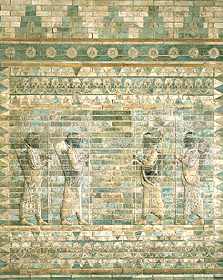 |
|
Les archers de Darius
Suse
Vers 510 avant J.-C.
Bas-relief, briques siliceuses à glaçure
H 4,75 m
AOD 488
Darius Ier (522-486 avant J.-C.) fit de Suse la capitale
administrative, où il construisit son palais de tradition
babylonienne, auquel était adjointe une salle du trône, à
colonnes, de tradition iranienne Le décor en briques glaçurées de
ce palais évoque surtout l'armée perse: les archers revêtus de la
robe d'apparat, qui n'était pas leur tenue de combat. Soucieux de
représenter cette robe plissée, selon la tradition attestée précédemment
au Luristan, les émailleurs susiens se sont inspirés du modèle
grec, en le stylisant selon leur génie propre.
|
 |
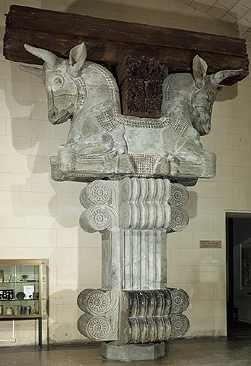 |
|
Chapiteau d'une colonne de la salle d'audiences
(Apadana) du palais de Darius Ier
Suse
Epoque achéménide. Règne de Darius Ier (vers 510 avant J.-C.)
Calcaire
H 3,20 m
AOD 1
L'Apadana du palais de Darius Ier à Suse, située au nord de la
résidence, se présentait comme une vaste salle à colonnes de plan
carré entourée de trois portiques. Les trente-six colonnes à base
carrée de l'espace intérieur atteignaient une hauteur de 21 mètres.
Le chapiteau en calcaire gris était composé d'une paire d'avant-trains
adossés de taureaux qui supportaient les poutres du plafond, de
volutes d'inspiration ionienne. Il manque au-dessous un élément en
corolle palmiforme d'origine égyptienne, et dont quelques fragments
ont été retrouvés. Les trente-six colonnes des portiques avaient
une base campaniforme.
|
 |
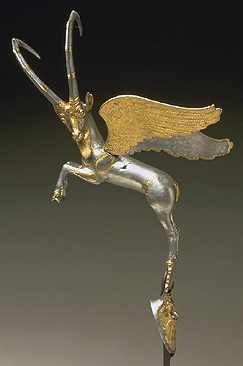 |
|
Anse de vase achéménide
IVe siècle avant J.-C.
Argent et or
H 27 cm; L 15 cm
AO 2748
Selon toute vraisemblance, cette anse zoomorphe en argent
partiellement plaquée or et son pendant du Musée de Berlin
appartenaient à un de ces vases d'apparat à haut col évasé et
panse ovoïde cannelée que nous montrent les bas-reliefs de Persépolis
et dont quelques exemplaires en bronze ou en métal précieux sont
parvenus jusqu'à nous. Comme leurs ancêtres nomades d'Iran du Nord,
les grands rois perses appréciaient vivement la vaisselle de luxe.
Leurs orfèvres s'inspiraient librement de l'art des peuples de
l'empire. C'est ainsi que ce bouquetin ailé est foncièrement
iranien, mais repose sur un masque de Silène, emprunté aux Grecs
d'Ionie.
|
 |
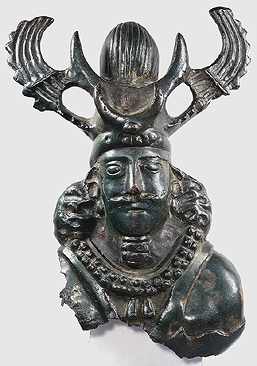 |
|
Buste d'un roi sassanide
Ladjvard, Mazandaran (Iran) ?
Epoque sassanide. Ve -VIIe siècle après J.-C.
Bronze
H 33 cm
MAO 122
Ce buste royal porte les insignes des rois sassanides: la
couronne ailée, la barbe passée dans un anneau, et un pectoral
maintenu par une sorte de harnais. La forme de la couronne qui
variait à chaque règne permet de penser qu'elle appartenait à un
souverain du VIe siècle ou du VIIe siècle après J.-C.
|
 |
| Carpets
Carpet weaving is truley a Persian
tradition. Xenophon, the ancient Greek historian recorded that in
Achemaenid times the ancient city of Sardis, then subject to the Persians,
prided itself on its carpets. Carpet design in Iran was abstract
expressionism to the highest degree. Each weaving region particular in its
choice of natural dyes, weaving design, and techniques. Persian rugs,
kilims and carpets have the quality of improving with use, but even
dispite this quality no carpet that can be described as Persian can be
dated much before the early 16th century. Only three 16 century Persian
carpets are inscribed with dates. The most notable of these is the famous
Ardabil carpet at London's Victoria & Albert Museum. This Museum also
houses some other magnificent examples of Persian carpets, well worth a
visit for any carpet lover of the Persian kind. |
|
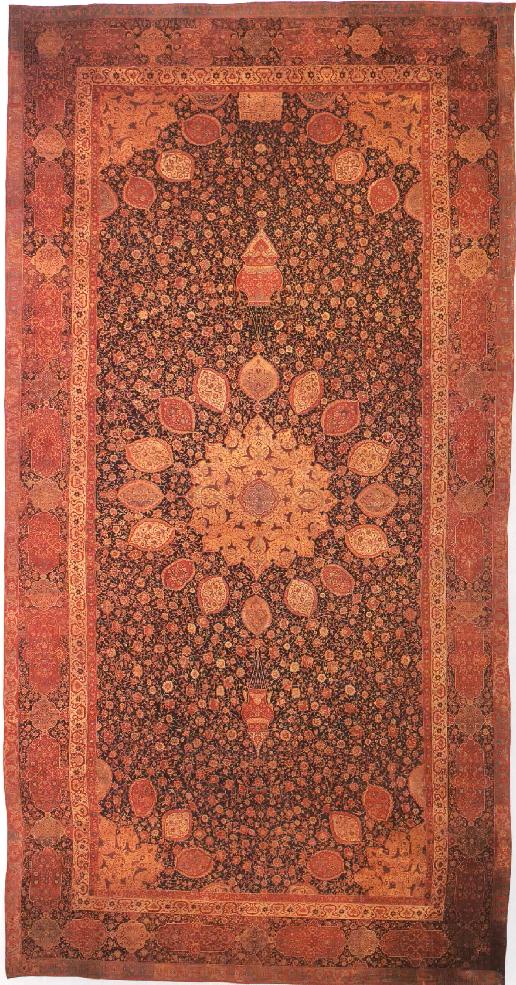
The
Ardebil Carpet, signed Maqsud Kashani and dated 1539-40. Silk warps,
three silk wefts, wool pile, asymmetrical knots. 10.51 x 5.53 M,
Victoria and Albert Museum, London.
|
|
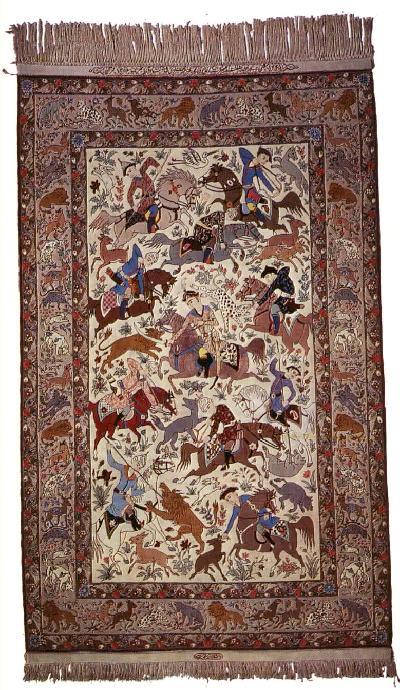
A double
sided silk and wool Esfahan woven to the order of Golamali
Seif-Nasseri by Hekmatnejad. Such double sided carpets were often used
as curtains. This one shows a hunting scene and animal motifs. It took
6 weavers 3.5 years to complete.
|
|
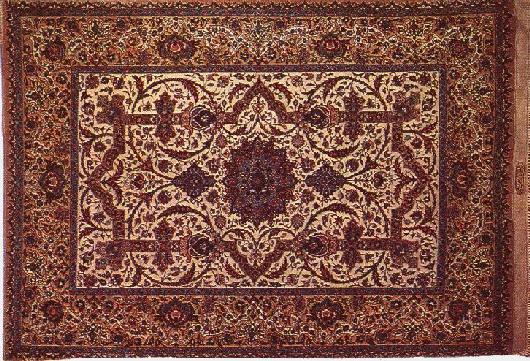
Isfahan Hekmatnejad, motifs are
taken from the inside of the mosques in Isfahan.
|
|

A Kashan
Mohtashemi
Woven at the end of the 19th Century.
Shows the tree of life and adorned round the borders with verses of Hafez.
Mohtashemi was a renowned weaver producing the best of Kashans.
|
| |
| |
Mesopotamia 9000 - 500 B.C
Early Farming Communities 9000-5000
| 9000 |
|
Beginning cultivation of wild wheat and
barley and domestication of dogs and sheep; inaugurating of change
from food gathering to food producing culture - Karim Shahir in
Zagros foothills. |
| 7000 |
|
At Jarmo, oldest known permanent
settlement: crude mud houses, wheat grown from seed, herds of
goats, sheep, and pigs. |
| 6000 |
Migration of northern farmers settle in
region from Babylon to Persian Gulf. |
Hassuna culture introduces irrigation,
fine pottery, permanent dwellings; dominates culture for 1000
years, develops tradefrom Persian Gulf to Mediterranean. |
Pre-Sumerians 5000-3500
| 5000 |
|
Ubaidians develop first divisions of
labor, mud brick villages, first religious shrines. Small temple
at Eridu - earliest example of an offering table and niche for
cult object. |
| 4500 |
|
|
| 4000 |
Semitic nomads from Syria and Arabian
peninsula invade southern Mesopotamia, intermingle with Ubaidian
population |
Temple at Tepe Gawra built
- setting style for later examples. |
Sumerians 3500-1900
| 3500 |
Sumerians settle on banks of Euphrates |
Temple at Eridu - zigguratprototype |
|
| 3000 |
Democratic assemblies give way to
kingships, evolve into hereditary monarchies. |
|
|
Kish - leading Sumerian city |
Introduction of pictographs to keep
administrative records.
3-D statues, e.g. Warka head.
White Temple - ziggurat traditional design.
Temple at Tell Uqair - mosaic decorations.
cuneiform land sales formal contracts.
Eridu and Kish - simple palaces.
"Standard of Ur" - war-peace plaque, religious
statues, gold and silver artifacts buried in tombs of Ur.
Sumerians of Abu Salabikh - first poetry. |
| 2750 |
|
|
Gilgamesh, hero of Sumerian legends,
reigns as king of Erech |
| 2500 |
Lugalannemudu of Abab unites city states
which vie for domination for 200 years. |
|
| 2250 |
Ur-Nammu founds Ur's 3rd. dynasty;
dedicates ziggurat at Ur moon-god Nanna, sets up early law
code. |
Gudea, Prince of Lagsh, art and lit
patron,magnificant statues produced in his honor. |
| 2000 |
Elamites attack and destroy Ur. |
Babylonians and Assyrians 1900-500
| 1900 |
Amorites from Syrian desert conquer
Sumer. |
|
| 1800 |
Hammurabi asccends Babylonian throne. |
|
| 1700 |
Hammurabi brings most
of Mesopotamia under his control. |
Hammurabi introduces law code. |
| 1600 |
Hittite invasion from Turkey ends
Hammurabi's dynasty. |
|
| 1500 |
Assyria conquered by Hurrians from
Anatolia. |
Bas-relief of baked brick appears as
dominant art form - Karaindash Temple. |
| 1400 |
Kurigalzu assumes Babylonian throne |
|
| 1200 |
Nebuchadrezzar I expels Elamites. |
|
| 1100 |
King Tiglath-Pileser I
leads Assyria to new era of power. |
Iron, introduced originally by
Hittites, is used extensively in Assyria for tools and
weapons. |
| 1000 |
Assyrian empire shattered by Aramaean
and Zagros tribes. 150 Assyrian decline halted by Adadnirari
II. |
| 900 |
|
Assurnasirpal II builds magnificent
new capital, Calah, replacing old capital of Assur, present
day Nimrud. |
| 800 |
Tiglath-Pileser II creates great
empire extending from the Persian Gulf to the borders of
Egypt. |
Sargon II builds new capitol at
Dur-Sharrukin |
| 700 |
Assurbanipal extends empire from Nile
to Caucasus Mountains. Chaldeans and Iranian Medes overrun
Assyria - Neo-Babylonian empire. |
Sennacherib's son, Esaraddon, rebuilds
Babylon. |
| 600 |
Nebuchadrezzar II rules Neo-Babylonian
empire. Razes Jerusalem, takes Jews into captivity in Babylon. |
Builds "Tower of Babel,"
temple to Marduk |
| 500 |
Cyrus the Great, Persian warrior and
statesman, conquers Babylon. |
|
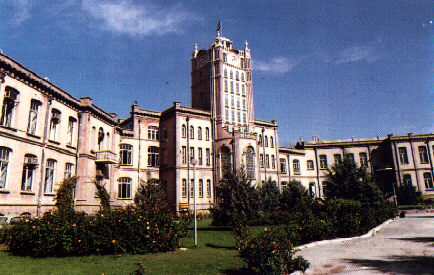 Tabriz, Constitution House
constructed in 1312 (1933)
Tabriz, Constitution House
constructed in 1312 (1933)
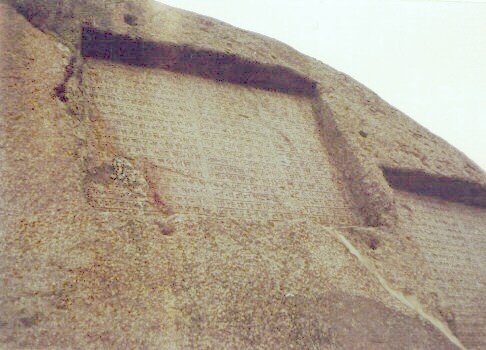 Hamadan, Ganjnameh, inscriptions on Alvand
mountain
two tablets on granit, second tablet:
A great God is Ahuramazda, the greatest of
the God,
who created this earth, who created that
heaven,
who created man, who created happiness for
man,
who made Xerxes King, the one King of many
Kings, the one Lord of many Lords,
I am Xerxes,
the greath King, King of Kings,
the King of countries having many men, the
King in this great earth far and wide,
the son of Darius the King an Achaemenian.
Hamadan, Ganjnameh, inscriptions on Alvand
mountain
two tablets on granit, second tablet:
A great God is Ahuramazda, the greatest of
the God,
who created this earth, who created that
heaven,
who created man, who created happiness for
man,
who made Xerxes King, the one King of many
Kings, the one Lord of many Lords,
I am Xerxes,
the greath King, King of Kings,
the King of countries having many men, the
King in this great earth far and wide,
the son of Darius the King an Achaemenian.
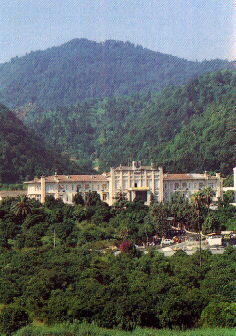 Ramsar
Ramsar
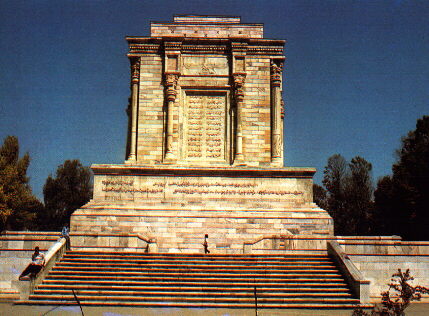 Tus, Khorasan
Mausoleum of Ferdowsi
Tus, Khorasan
Mausoleum of Ferdowsi
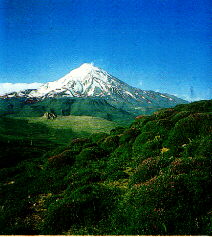 Damavand (5671 m.)
The highest summit in Iran
Damavand (5671 m.)
The highest summit in Iran
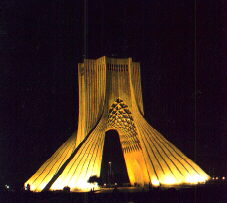 Shahyad Tower, Tehran
Shahyad tower with museum is built in
1971 in Shahyad square on 50,000 sqm.
The height of this tower is 45 m.
Shahyad Tower, Tehran
Shahyad tower with museum is built in
1971 in Shahyad square on 50,000 sqm.
The height of this tower is 45 m.
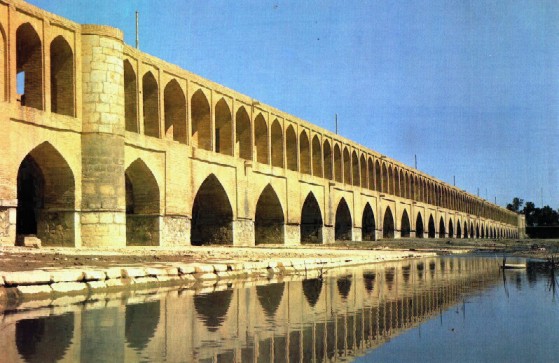 Si-o-Seh Pol, Esfahan
Si-o-Seh Pol or Pol-e-Allahverdi Khan over
Zayandeh-Rud.
It consists of 33 arches and was
constructed with bricks (300 m. long & 14 m. wide) in 1602 A.D.
by the order of Shah Abbas I and by
Allahverdi Khan.
Si-o-Seh Pol, Esfahan
Si-o-Seh Pol or Pol-e-Allahverdi Khan over
Zayandeh-Rud.
It consists of 33 arches and was
constructed with bricks (300 m. long & 14 m. wide) in 1602 A.D.
by the order of Shah Abbas I and by
Allahverdi Khan.
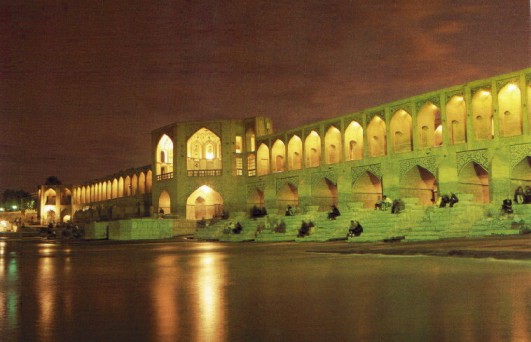 Khaju Bridge, Esfahan
Khaju bridge was constructed over
Zayandeh-Rud, by the order of Shah Abbas II (1650 A.D.)
Khaju Bridge, Esfahan
Khaju bridge was constructed over
Zayandeh-Rud, by the order of Shah Abbas II (1650 A.D.)
 Mausoleum of Hafez, Shiraz
Khajeh Shamseddin Mohammad, Hafez-e Shirazi
( 1300-1389 A.D. )
Mausoleum of Hafez, Shiraz
Khajeh Shamseddin Mohammad, Hafez-e Shirazi
( 1300-1389 A.D. )
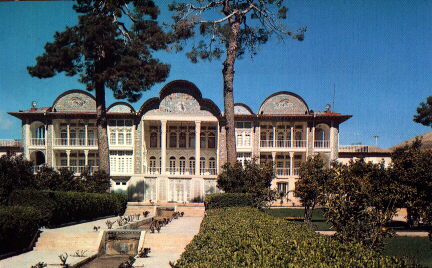 Eram Garden, Shiraz
Eram (=Paradise) garden is a typical late
Qajar palace
Eram Garden, Shiraz
Eram (=Paradise) garden is a typical late
Qajar palace
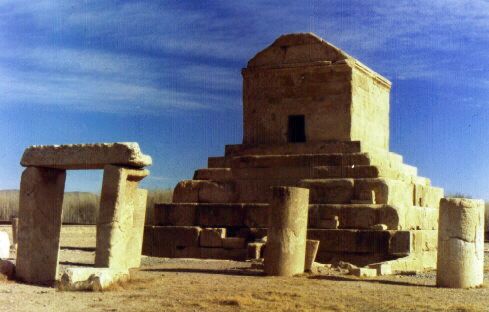 Nagsh-e Rostam, Mausoleum of Cyros
Nagsh-e Rostam, Mausoleum of Cyros
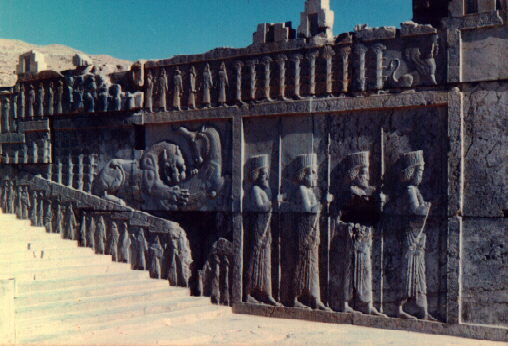 Persepolis
The site's Islamic name is Takht-e Jamishid,
"The thron of Jamshid".
The ancient name is "Parsa",
"Pars's Town",
was built during the reign of Darius by his
order in 514 B.C.
Persepolis
The site's Islamic name is Takht-e Jamishid,
"The thron of Jamshid".
The ancient name is "Parsa",
"Pars's Town",
was built during the reign of Darius by his
order in 514 B.C.
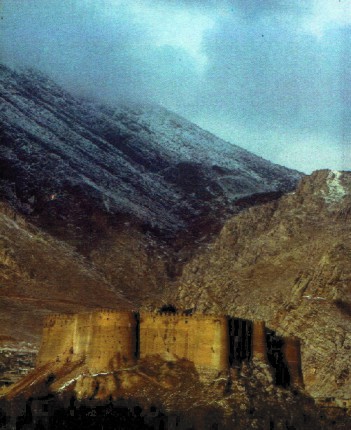 Falak-ol Aflak Fortress, Khorram Abad
The eight-towered fortress covers an area
of 5300 m², and the height about 40 m. above the
surrounding street level.
The original building of this fortress
dates back to the Sasanian period. Recorded sources
refer to it as Shapur-Khast or Sabr-Khast
fortress, Dezbaz, Khorram-Abad fortress,
and ultimately Falak-ol-Aflak fortress.
Falak-ol Aflak Fortress, Khorram Abad
The eight-towered fortress covers an area
of 5300 m², and the height about 40 m. above the
surrounding street level.
The original building of this fortress
dates back to the Sasanian period. Recorded sources
refer to it as Shapur-Khast or Sabr-Khast
fortress, Dezbaz, Khorram-Abad fortress,
and ultimately Falak-ol-Aflak fortress.
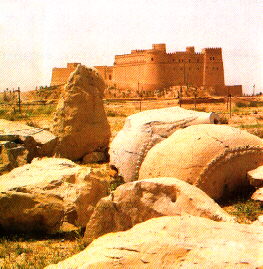 Shush (Susa)
Occupied for at least 6000 years from
prehistoric times.
The castle overlooking the Achaemenian
palaces was built some 90 years ago.
Shush (Susa)
Occupied for at least 6000 years from
prehistoric times.
The castle overlooking the Achaemenian
palaces was built some 90 years ago.
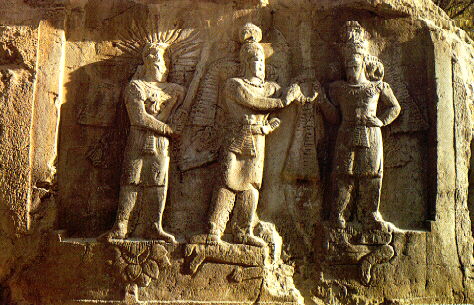 Tagh-e Bostan, Kermanshahan
The bas-relief on the right shows the
investiture of Ardeshir II (379 A.D.),
the King receives from God Hormozd a
ribbon-decked ring,
the symbol of Royal power,
to his right God Mithra holds a bunch of
sacred branches,
a ritual instrument in use since the Median
period.
Tagh-e Bostan, Kermanshahan
The bas-relief on the right shows the
investiture of Ardeshir II (379 A.D.),
the King receives from God Hormozd a
ribbon-decked ring,
the symbol of Royal power,
to his right God Mithra holds a bunch of
sacred branches,
a ritual instrument in use since the Median
period.
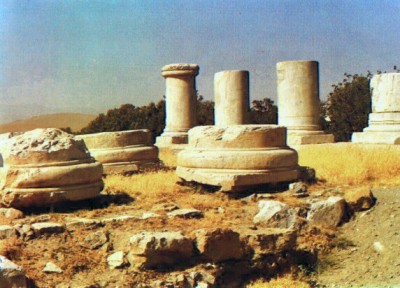 Anahita Temple
This temple attributed to the Parthian
period (200 B.C.)
Anahita Temple
This temple attributed to the Parthian
period (200 B.C.)
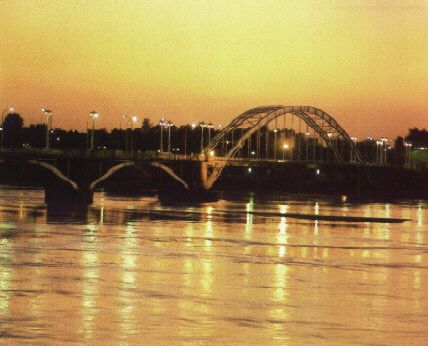 White Bridge, Ahvaz
White Bridge over Karun
500 m. long & 9 m. wide, was
built in 1937
White Bridge, Ahvaz
White Bridge over Karun
500 m. long & 9 m. wide, was
built in 1937
 Bandar Abbas
Bandar Abbas
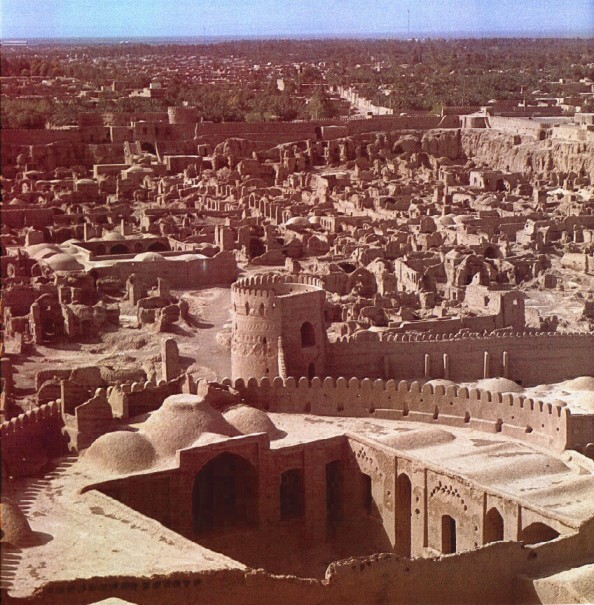 Bam, Kerman
The abandoned city, the forgotten fortress.
It was residential till 150 years ago and
there is no information about the exact date of the construction.
Bam, Kerman
The abandoned city, the forgotten fortress.
It was residential till 150 years ago and
there is no information about the exact date of the construction.
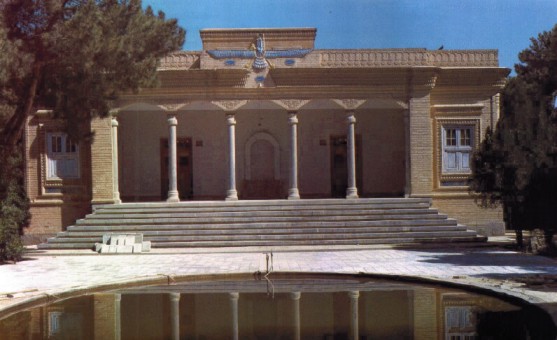 Yazd
Fire temple of Zoroastrians
Yazd
Fire temple of Zoroastrians
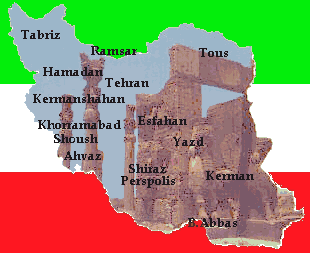
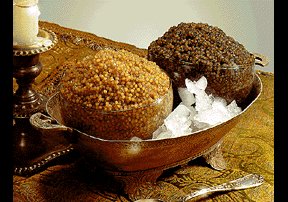



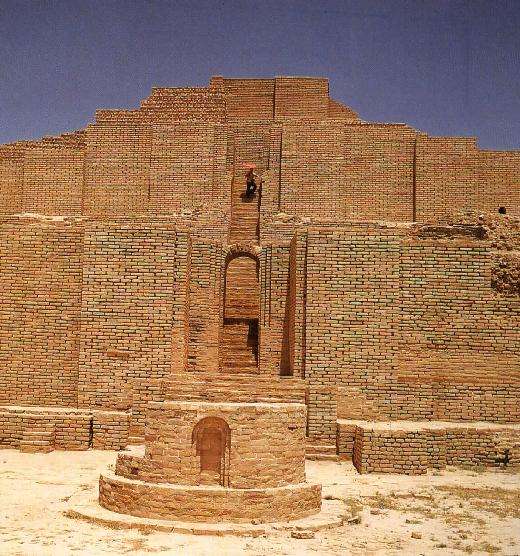
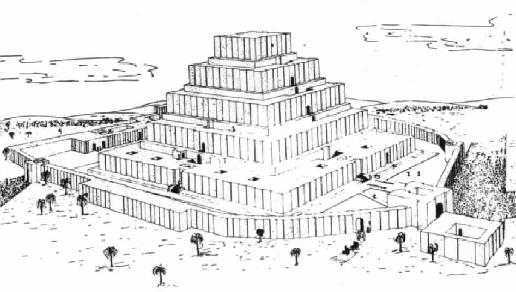
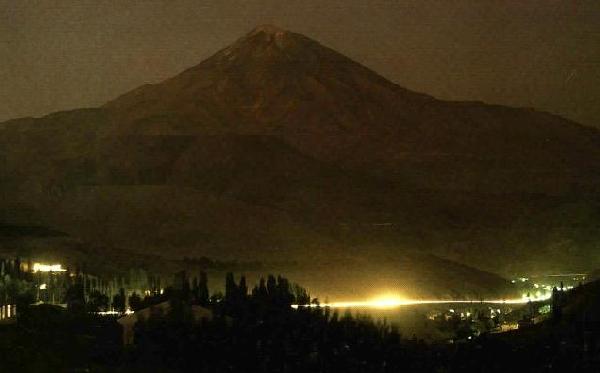

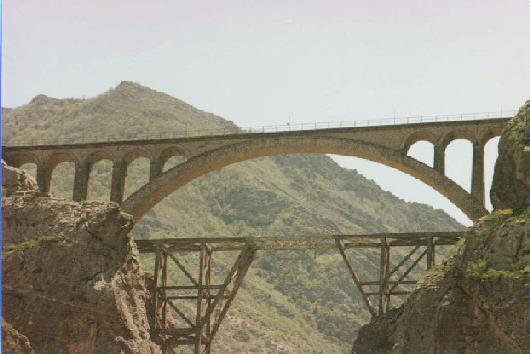
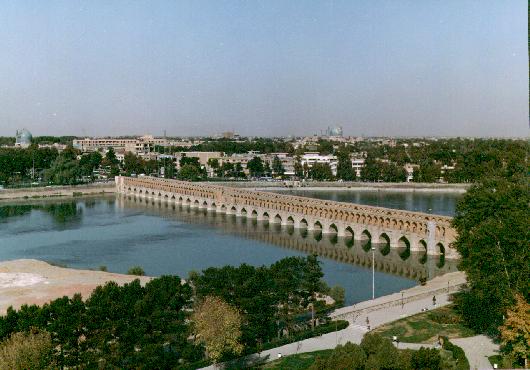
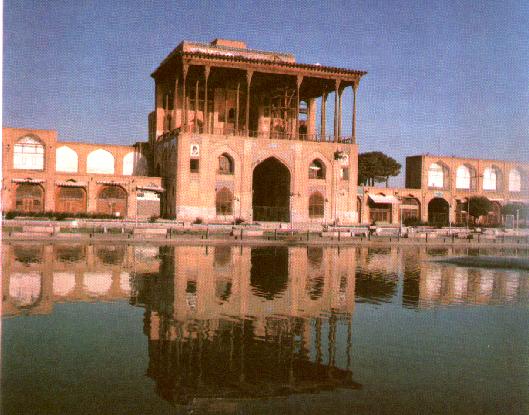
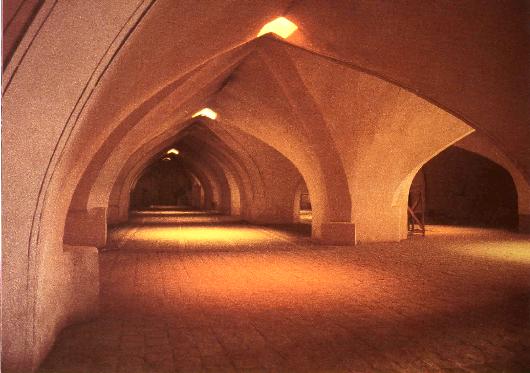

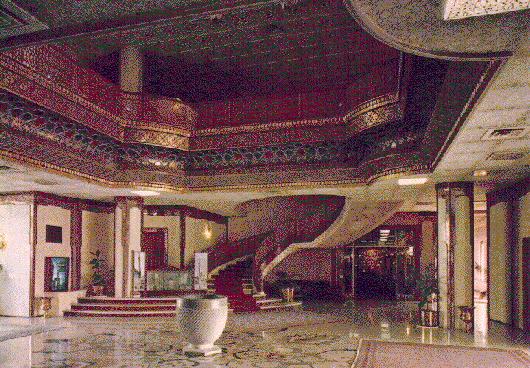
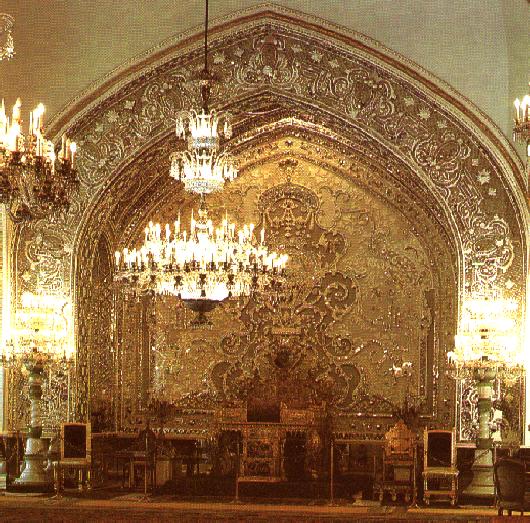
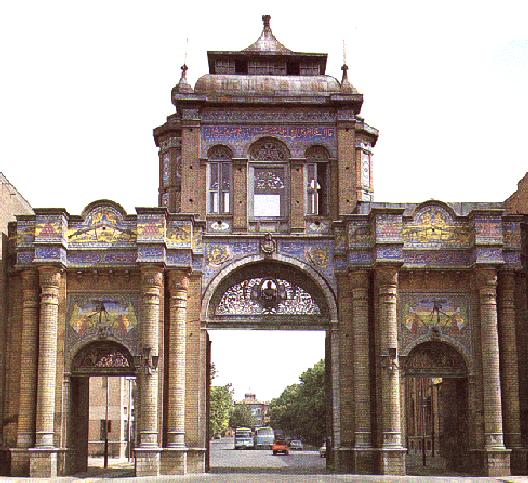
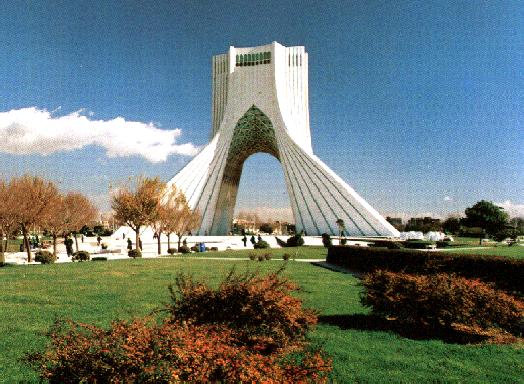

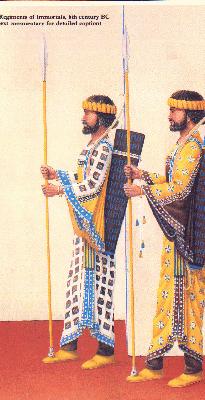

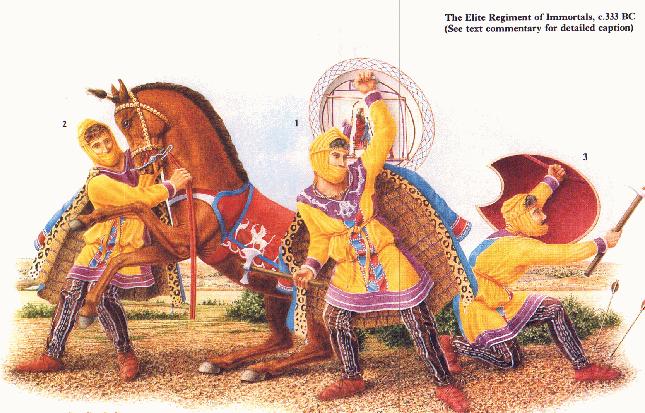


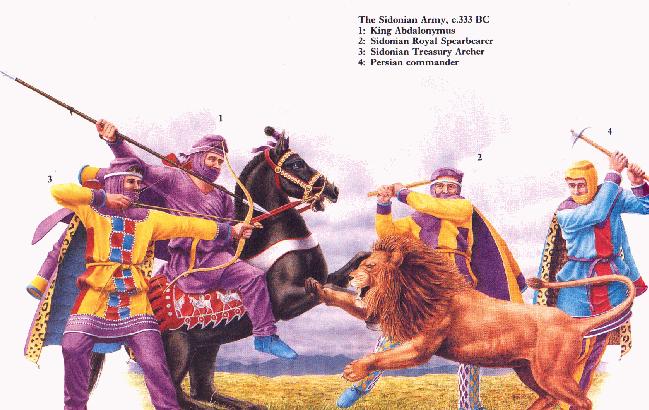































































































































 .............
.............









































